As I mentioned in my review of Bandon Dunes, discovering and buying Tom Doak’s yellow Confidential Guide to Golf Courses in 1999 was a transformative event for me. It gave me a new golf course architecture hobby, one that unlike some of my earlier childhood hobbies, remains strong to this day. Although Doak had laid out his principles of design in his earlier book (which I also read) Anatomy of a Golf Course, it was the Confidential Guide which stuck with me because one, it introduced me to so many courses that I hadn’t heard of and two, Doak appeared to be completely uninterested in pulling punches, calling everything as he saw it. Going well beyond golf course architecture, and for better or worse, Doak’s intellectual style has been a major influence on me.
More substantively, Doak preached the gospel of the now ubiquitous ‘minimalism,’ the idea that architects should move a minimal amount earth to construct their courses and that the features of courses should reflect features of the land. Now Doak has said over the years that he isn’t a minimalist strictly speaking and he’s willing to move a large amount of earth if the site has minimal features (like his Rawls Course at Texas Tech). I think it probably makes more sense to call him a ‘naturalist,’ meaning that if the land is interesting, he’s a minimalist and uses the features of the land but if it isn’t, he constructs features but shapes them so that they look natural, with soft slopes and limited shaping outside of the green complexes. This contrasts with the maximalist shaping of courses in the 80s/90s, when architects would build mounds alongside their holes and around their greens.
But by 1999, and certainly in part because of the divisiveness of his writing, Doak hadn’t built any courses that got much more than local attention. That changed when he was given the opportunity to build Pacific Dunes, the follow-up course to Bandon Dunes. This spectacular site gave him the opportunity to put his principles into practice; more natural features than you could know what to do with and all sand, meaning that whatever shaping he did do would drain readily. And of course there were a couple hundred yards of clifftop ocean frontage. Pacific Dunes was Doak’s big break.
And he made the most of it, beginning the development of his reputation as one of the go-to guys if you have a great piece of property. Ever since it opened, the course has been the most highly ranked of the resort’s courses and is a regular in the top 25 on lists of the top 100 golf courses in the world. Now a good part of that is due to its obvious natural advantages—anyone should be able to build some great holes along the ocean and in the mid-sized sand dunes that cover much of the property.
But a big part of what makes this course so good is its unconventional nature. The property isn’t that large, is somewhat awkwardly shaped, and the land is flatter on a pretty good chunk of it (the north side). Doak’s answer to these challenges was to eat up the flatter land with long holes and build several par 3s and shorter par 4s on the more interesting land. This resulted in an unusual mix of holes, with only one par 3 and one par 5 on the front nine but four par 3s and three par 5s on the back.
Two other strengths are the clarity of Doak’s vision and his restraint. Throughout his career, Doak has been criticized for overdoing his greens. But, probably trying not to compete with the site and knowing that it would be windy, Doak toned down his green contours here, building a set of greens which are smaller and narrower than some of his other courses (like Old MacDonald next door), where the emphasis is more on setting up angles and precise iron play. Perhaps more than any other course that I’ve played, it’s important so set up the correct angle into greens here as they heavily favor shots played from the correct places in the fairway over others. Given this focus, to heavily contour these greens would have been to overdo the golf course and make it too difficult. It has a reputation as the most difficult course at the resort—probably because most golfers aren’t too good with their irons—but it’s possible to think your way around this course and through conservative play into the green, leave yourself many realistic chances at par.
Pacific Dunes starts with a pair of short par 4s. The first is definitely not one of the more inviting first holes that I’ve played, but there’s more room to play than appears if you can get it past a row of trees on the left, about 175 yards from the 325 yard standard back tees. With bunkers 230 out on the right, there’s no reason to get aggressive here. Just try to hit something straight, about 200-220 yards.
More substantively, Doak preached the gospel of the now ubiquitous ‘minimalism,’ the idea that architects should move a minimal amount earth to construct their courses and that the features of courses should reflect features of the land. Now Doak has said over the years that he isn’t a minimalist strictly speaking and he’s willing to move a large amount of earth if the site has minimal features (like his Rawls Course at Texas Tech). I think it probably makes more sense to call him a ‘naturalist,’ meaning that if the land is interesting, he’s a minimalist and uses the features of the land but if it isn’t, he constructs features but shapes them so that they look natural, with soft slopes and limited shaping outside of the green complexes. This contrasts with the maximalist shaping of courses in the 80s/90s, when architects would build mounds alongside their holes and around their greens.
But by 1999, and certainly in part because of the divisiveness of his writing, Doak hadn’t built any courses that got much more than local attention. That changed when he was given the opportunity to build Pacific Dunes, the follow-up course to Bandon Dunes. This spectacular site gave him the opportunity to put his principles into practice; more natural features than you could know what to do with and all sand, meaning that whatever shaping he did do would drain readily. And of course there were a couple hundred yards of clifftop ocean frontage. Pacific Dunes was Doak’s big break.
And he made the most of it, beginning the development of his reputation as one of the go-to guys if you have a great piece of property. Ever since it opened, the course has been the most highly ranked of the resort’s courses and is a regular in the top 25 on lists of the top 100 golf courses in the world. Now a good part of that is due to its obvious natural advantages—anyone should be able to build some great holes along the ocean and in the mid-sized sand dunes that cover much of the property.
But a big part of what makes this course so good is its unconventional nature. The property isn’t that large, is somewhat awkwardly shaped, and the land is flatter on a pretty good chunk of it (the north side). Doak’s answer to these challenges was to eat up the flatter land with long holes and build several par 3s and shorter par 4s on the more interesting land. This resulted in an unusual mix of holes, with only one par 3 and one par 5 on the front nine but four par 3s and three par 5s on the back.
Two other strengths are the clarity of Doak’s vision and his restraint. Throughout his career, Doak has been criticized for overdoing his greens. But, probably trying not to compete with the site and knowing that it would be windy, Doak toned down his green contours here, building a set of greens which are smaller and narrower than some of his other courses (like Old MacDonald next door), where the emphasis is more on setting up angles and precise iron play. Perhaps more than any other course that I’ve played, it’s important so set up the correct angle into greens here as they heavily favor shots played from the correct places in the fairway over others. Given this focus, to heavily contour these greens would have been to overdo the golf course and make it too difficult. It has a reputation as the most difficult course at the resort—probably because most golfers aren’t too good with their irons—but it’s possible to think your way around this course and through conservative play into the green, leave yourself many realistic chances at par.
Pacific Dunes starts with a pair of short par 4s. The first is definitely not one of the more inviting first holes that I’ve played, but there’s more room to play than appears if you can get it past a row of trees on the left, about 175 yards from the 325 yard standard back tees. With bunkers 230 out on the right, there’s no reason to get aggressive here. Just try to hit something straight, about 200-220 yards.
The interest picks up with the ~360 yard second. The strategy is clear from the tee; if you carry two bunkers up the left side 220 and 240 from the tee, you’ll have a clear angle straight down the green. If you play out to the right, you’ll have a blind approach. But if you think it’d be a challenge to carry the bunkers, don’t bother. The visibility from the right side of the fairway may not be great, but the green is also very receptive from this angle and if you have decent distance control with your short irons, it’s still a green light shot.
The northern part of the property, next to Old MacDonald, is the flattest and Doak used it to build four of his longest holes. Three is a par 5 of just under 500 yards. There are two large bunkers in the center of the fairway so you need to pick a side—the more obvious (and wider) right side where you’ll have to keep your drive between the bunkers and gorse and the left side, where you’ll have to keep it between the bunkers and mounds covered with junk. If you think you’ll want to go for the green, the left side is probably better because you can run the ball up the front-left of the green.
If you lay up, it’s also best to keep it up the left side and hedge left of the pin on your third—you don’t want any part of the front-right bunkers.
If you lay up, it’s also best to keep it up the left side and hedge left of the pin on your third—you don’t want any part of the front-right bunkers.
After a short downhill walk past the snack hut, we come to what’s obviously one of the course’s standout holes: the long, coastline par 4 fourth. If you’re familiar with the place, you’ve probably seen pictures of it in some of the promotional material.
While it makes the pictures for its beauty, this is one where the quality of the design matches the setting. The main challenge is fitting your drive between a cluster of bunkers 250 out on the left and the coastline. If you’re short of these, it’ll be tough to reach the green. There’s about a 50 yard gap between the coast and the bunkers and while that should be plenty of room, let’s just say that it’s a bit more intimidating when the hazard on the other side is a cliff and an ocean than when it’s some long grass or a pond. The green complex is also very well-conceived—large and deep, but angled gently from left-to-right to better contain an approach from the right side of the fairway than the left. There are some nasty bunkers short and left of the green, but these shouldn’t be an issue unless you take a swipe at the green from too far out.
To me, this hole exemplifies the strengths of Pacific Dunes that I mentioned at the outset. The setting is obviously spectacular and the design doesn’t try to compete with it. A few bunkers up the left side and a gentle tilt to the putting surface give the advantage to those who play bravely along the coast. This is certainly in the small handful of best holes at the resort.
While it makes the pictures for its beauty, this is one where the quality of the design matches the setting. The main challenge is fitting your drive between a cluster of bunkers 250 out on the left and the coastline. If you’re short of these, it’ll be tough to reach the green. There’s about a 50 yard gap between the coast and the bunkers and while that should be plenty of room, let’s just say that it’s a bit more intimidating when the hazard on the other side is a cliff and an ocean than when it’s some long grass or a pond. The green complex is also very well-conceived—large and deep, but angled gently from left-to-right to better contain an approach from the right side of the fairway than the left. There are some nasty bunkers short and left of the green, but these shouldn’t be an issue unless you take a swipe at the green from too far out.
To me, this hole exemplifies the strengths of Pacific Dunes that I mentioned at the outset. The setting is obviously spectacular and the design doesn’t try to compete with it. A few bunkers up the left side and a gentle tilt to the putting surface give the advantage to those who play bravely along the coast. This is certainly in the small handful of best holes at the resort.
At this point, the course turns inland back inland and, we might think, will lose some steam. It doesn’t. While not everyone in my group liked the par 3 fifth, I thought it was excellent. It’s one of the more playable holes on the course as shots played a bit left of the green should funnel back onto it. The green is deep and angles from front-left to back-right, with a narrow section surrounded by trouble at the back. Needless to say, when the pin is here, you should aim for the middle of the green.
One of the holes that I was concerned about before I played Pacific Dunes was the short par 4 sixth, which has a narrow green perched above a bomb crater of a bunker at its left and a deep hollow at its right. I was worried that this would be one of these overly severe green complexes that you see on a lot of newer courses, where a slight miss can result in an impossible shot where you go back-and-forth across the green and make an X.
But that shouldn’t be the case here. To start, the drive is easier than I expected, requiring a carry of only about 215 yards over the dune and bunker on the right (but it was downwind for us). And the fairway is wide-open here. If you make the carry, it’s a straight-forward pitch up the hill. The trick here is to hedge short because the front of the green is wider than the back and the slope off the right side of the green becomes progressively steeper the deeper into the green you go. Needless to say, if you couldn’t carry the fairway bunker or ended up in the left side of the fairway for any other reason, you should play very conservatively into this green.
But that shouldn’t be the case here. To start, the drive is easier than I expected, requiring a carry of only about 215 yards over the dune and bunker on the right (but it was downwind for us). And the fairway is wide-open here. If you make the carry, it’s a straight-forward pitch up the hill. The trick here is to hedge short because the front of the green is wider than the back and the slope off the right side of the green becomes progressively steeper the deeper into the green you go. Needless to say, if you couldn’t carry the fairway bunker or ended up in the left side of the fairway for any other reason, you should play very conservatively into this green.
On the other hand, the long par 4 seventh will almost always be very difficult. The one thing going in our favor here is that the drive is to one of the widest fairways on the course and you can swing away without too much worry.
And you need a long drive here because the approach is to one of the tightest, most well-defended greens on the course, with bunkers and other junk up the entire left side starting a few dozen yards short of the green and more bunkers and junk short-right. It’s an extremely demanding approach for a longer iron and for most, it probably makes sense to lay 40 or 50 yards back in the fairway. This green site pushes the limits of difficulty for a long par 4 but it’s also the only one like this on the course, which makes it reasonable.
And you need a long drive here because the approach is to one of the tightest, most well-defended greens on the course, with bunkers and other junk up the entire left side starting a few dozen yards short of the green and more bunkers and junk short-right. It’s an extremely demanding approach for a longer iron and for most, it probably makes sense to lay 40 or 50 yards back in the fairway. This green site pushes the limits of difficulty for a long par 4 but it’s also the only one like this on the course, which makes it reasonable.
Holes like the mid-length par 4 eighth are what make Pacific Dunes stand out. There’s nothing particularly interesting about either the scenery or the land. There are no dramatic design features. Yet it’s an incredibly interesting hole because of three simple things: the shape of the putting surface, its angle, and the bunker at its front-right.
Like seven, the fairway here is wide. But unlike seven, it’s very important that you’re on the correct side of it, which is the left side. You want to get your drive as close to the trees on the left as you can without going in them because the green is skinny, deep, and angles from front-left to back-right. While the green’s skinniness precludes calling any shot into it easy, an approach from near these trees gives you the entire length of the green to play down while one from the right side of the fairway gives you a nasty angle over a bunker into the shallowest aspect of an unreceptive green. Regardless of where you drive it, it’s best to hedge a bit long as the back of the green is wider and more receptive than the front.
This hole is minimalism at its finest—not just minimalism in terms of shaping, but minimalism in terms of getting a maximum amount of interest out of a minimum of design elements. It looks innocuous, but there’s as much interest here as any at the resort.
Like seven, the fairway here is wide. But unlike seven, it’s very important that you’re on the correct side of it, which is the left side. You want to get your drive as close to the trees on the left as you can without going in them because the green is skinny, deep, and angles from front-left to back-right. While the green’s skinniness precludes calling any shot into it easy, an approach from near these trees gives you the entire length of the green to play down while one from the right side of the fairway gives you a nasty angle over a bunker into the shallowest aspect of an unreceptive green. Regardless of where you drive it, it’s best to hedge a bit long as the back of the green is wider and more receptive than the front.
This hole is minimalism at its finest—not just minimalism in terms of shaping, but minimalism in terms of getting a maximum amount of interest out of a minimum of design elements. It looks innocuous, but there’s as much interest here as any at the resort.
Much busier and not the better for it is the mid-length par 4 ninth. This hole has two greens, high to the right and low to the left. Unfortunately, I only played Pacific Dunes once and only got to see the lower green. There isn’t much to this version of the hole. It’s only about 215 to carry the bunker on the left but it’s also unnecessary. Just hit something out to the right of it and take a slightly longer (but still not too long) iron in.
I thought that this was the weakest hole on the course. Maybe it’s better to the upper green?
I thought that this was the weakest hole on the course. Maybe it’s better to the upper green?
Much better is the very photogenic long par 3 tenth. I thought that this was a very good take on a longer (~210 for us) par 3; there’s a good amount of open ground at the front of the green but it narrows as you get deeper into it. There’s all kinds of trouble right if you push it, which I’m sure is quite common here. Maybe not world class, but a very solid long par 3.
I think most would agree however that the short par 3 eleventh is world class. This is obviously one of the world’s most beautiful holes. I think it’s the hole that shows up the most in the resort’s promotional material.
But apart from being obviously beautiful, it’s an interesting hole. Unless you build a big, crazy green, there’s only so much that you can do with a short par 3. A common (and tired) template is the small green completely surrounded by bunkers. While this hole has bunkers tight to the sides, there’s a good amount of room between the bunkers in front and the green. There’s quite a bit of width at the front of the green and you can get away with some inaccuracy here.
You can’t, however get away with inaccuracy if playing to the back and if flying it all the way there, you’ll need to be precise. But you can also play to the middle-right of the green and use the slope coming off the right bunker to feed the ball into the back of the green. I’d have to play the hole a few more times to get a sense of how well this works. I hit my shot a bit too far right and it kicked my ball all the way to the left side of the green. I think it should work pretty well if you hit the lower part of the slope.
But apart from being obviously beautiful, it’s an interesting hole. Unless you build a big, crazy green, there’s only so much that you can do with a short par 3. A common (and tired) template is the small green completely surrounded by bunkers. While this hole has bunkers tight to the sides, there’s a good amount of room between the bunkers in front and the green. There’s quite a bit of width at the front of the green and you can get away with some inaccuracy here.
You can’t, however get away with inaccuracy if playing to the back and if flying it all the way there, you’ll need to be precise. But you can also play to the middle-right of the green and use the slope coming off the right bunker to feed the ball into the back of the green. I’d have to play the hole a few more times to get a sense of how well this works. I hit my shot a bit too far right and it kicked my ball all the way to the left side of the green. I think it should work pretty well if you hit the lower part of the slope.
If there’s a real breather hole at Pacific Dunes, it’s the 530 yard par 5 twelfth. There’s some gorse about 225 out on the right, but you shouldn’t be that far right. The only real feature here is a bunker in the middle of the fairway about 140 yards from the green. This might be an issue when the hole is playing into the wind in the summer but it wasn’t one for us. Best to hedge a bit right if going for the green in two because the right side is wide open.
The next famous hole at Pacific Dunes is, not surprisingly, the next one that runs along the coast, a long par 4. This one is much easier off the tee than four, with almost endless room out to the right until past 300 yards. But, following the main theme of the design, the green is skinny and deep, making the angle from the right side of the fairway difficult. Playing to the front of the green is no bargain either as it has one of the course’s highest false fronts.
This hole didn’t play too hard downwind (and for some reason, they had moved the tees up), but I imagine that it’d be plenty challenging enough into the wind in the summer. There’s a lot of flexibility in the hole. While the false front and narrowness of the green make it difficult to hit, there’s plenty of room short that you can use if you’re playing it on an into-the-wind day when you’re just hoping to finish it with the same ball.
This hole didn’t play too hard downwind (and for some reason, they had moved the tees up), but I imagine that it’d be plenty challenging enough into the wind in the summer. There’s a lot of flexibility in the hole. While the false front and narrowness of the green make it difficult to hit, there’s plenty of room short that you can use if you’re playing it on an into-the-wind day when you’re just hoping to finish it with the same ball.
Doak turns the screws on us a bit with the short par 3 fourteenth. You absolutely must hit your iron straight here as there is all kinds of trouble to the sides. You certainly want to hit to the front of the green in any kind of challenging conditions and short of the green probably isn’t too bad either, although I didn’t get a good look at it (having hooked my iron into the shit on the left).
Fifteen covers some of the flattest land on the property and like three and twelve, Doak elected to cover this space with a par 5. Like twelve and to a lesser extent three, it’s a bit of a weak hole. The main feature is the cluster of bunkers right of the fairway, although these start between 280 and 320 out, depending on where they put the back tees. Because the hole was into the wind, they moved the tees way up (our caddie had never seen the back tees so far up), putting these bunkers within range at only about 230.
I suspect that this hole was designed to play to play into the wind because there’s plenty of room off the tee and plenty on the approach. You just have to stay left of a bunker in the center of the fairway about 80 yards short of the center of the green. But you should do this anyway because the green angles from front-left to back-right and has a pretty good slope on its right side. I think they made the hole a bit too easy in moving the tees up because it was easy to carry the centerline bunker and get near the green off a decent drive.
I suspect that this hole was designed to play to play into the wind because there’s plenty of room off the tee and plenty on the approach. You just have to stay left of a bunker in the center of the fairway about 80 yards short of the center of the green. But you should do this anyway because the green angles from front-left to back-right and has a pretty good slope on its right side. I think they made the hole a bit too easy in moving the tees up because it was easy to carry the centerline bunker and get near the green off a decent drive.
One problem with only playing a course once is that if you play a hole poorly, it might be difficult to say much about it. That’s the case with me and the short par 4 sixteenth. I hit my weakest drive of the day under a pine tree on the right side and cursed my way down the rest of the hole.
Because the hole is only about 335 from the tips, I should have gone with my instinct and laid back. Looking at my pictures and the aerial, I think that the play here is to place your tee shot in the far left of the fairway, which gives you a look straight down another skinny but deep green. In addition to the shallow angle, playing down the right side means that you’ll have to come over a steep ridge. But there’s also some slope left of the green that should help contain something a bit long from the right side. I’d have to play this hole a few more times to get a good sense of how well these different shots into the green work
Because the hole is only about 335 from the tips, I should have gone with my instinct and laid back. Looking at my pictures and the aerial, I think that the play here is to place your tee shot in the far left of the fairway, which gives you a look straight down another skinny but deep green. In addition to the shallow angle, playing down the right side means that you’ll have to come over a steep ridge. But there’s also some slope left of the green that should help contain something a bit long from the right side. I’d have to play this hole a few more times to get a good sense of how well these different shots into the green work
Much simpler, but none the worse for it is the long par 3 seventeenth. This is the course’s take on the Redan and there’s plenty of room short and right of the green to run your ball on. But you don’t want to be too short and right; there’s a nasty cluster of bunkers under some pine trees about 50 feet short and right of the green. But unless you hit it in there, the hole shouldn’t be too difficult.
One hole that I think is almost always difficult is the long par 5 eighteenth. They gave us another break with the tees, putting us on the lower right tees that shortened the hole from about 580 to 540 and allowed us to play straight into the fairway rather than into it at an angle. But this also brought the bunkers that cut into the fairway on the left at about 240 into play.
The thing to note about this hole is that there isn’t much trouble for the last 150 yards. But there’s all kinds of trouble up to this point and I’d imagine that there are a few golfers who don’t make it to the 150 yard marker. Laying back off the tee would be prudent because anything right is in the bushes, but then it might be difficult to carry your approach into safety on the second. Sometimes a hole is just hard and you need to execute the shots.
The thing to note about this hole is that there isn’t much trouble for the last 150 yards. But there’s all kinds of trouble up to this point and I’d imagine that there are a few golfers who don’t make it to the 150 yard marker. Laying back off the tee would be prudent because anything right is in the bushes, but then it might be difficult to carry your approach into safety on the second. Sometimes a hole is just hard and you need to execute the shots.
Some people, especially the big data types, question the importance of angles in golf. When you compare scoring into pins placed close to one side of the green, where ostensibly you’d want to be on the opposite side of the fairway to have the more open angle, they find that scoring is actually lower for those who’ve driven it up the same side of the fairway as the pin. Now this isn’t as important a factor for scoring as being in the fairway vs. the rough or certainly avoiding a hazard vs. not, but big data proponents conclude from this that chasing angles is overrated and that we should stick to simpler strategies like staying away from hazards and playing to the fat part of greens.
But one of the problems with the big data approach to golf is that it lumps very different types of scenarios together. Not all angles are created equal. If the green is fairly broad and the pin is tucked to one side, the slightly shorter shot from playing up the same side of the fairway as the pin gives a scoring advantage because there’s enough room that the angle doesn’t really make a difference. There’s a big difference between angles on a course with a lot of greens like that and one like Pacific Dunes where the greens are typically deep and narrow, giving you a clear view from one part of the fairway but not from others. I suspect that if we had big data from a sample of courses with greens designed for angles like those here, we’d start to find that angles are pretty important.
That’s the thing that stands out to me about Pacific Dunes: it takes a simple—but powerful and interesting—approach to creating strategy in golf holes and applies it to a great piece of property. Because this approach means a lot of narrow greens with challenging hazards at their sides, which will be difficult in the ever-present wind, the other elements that can make a course very difficult, like fairway bunkering and green contours are toned down. More than any of the other ‘new classics’ that I’ve played, Pacific Dunes excels in simplicity: it has a clear, smart design plan, sticks to it, and avoids the excesses of overdone greens and eye candy bunkers. The site was always going to result in a beautiful golf course and, with the weather, a difficult one. No need to compete with or try to enhance that.
At the same time, this somewhat formulaic approach might keep Pacific Dunes slightly behind some of its other peer courses that I’ve played—namely Sunningdale Old and Royal St. George’s—in my estimation. Those courses (especially the former) have a few completely original holes that don’t seem to follow any design template. Holes like 11 at Sunningdale Old or 4 at Royal St. George’s are very unusual, but help bring a variety-in-oddness to those courses that I really like and that Pacific Dunes doesn’t try to match. For going through a bunch of large sand dunes, Pacific Dunes is surprisingly not-quirky.
I might have worked myself into a bit of a contradiction here, praising the course at the outset for its unconventional mix of holes but then criticizing it (relative to some lofty peers) for lacking variety and quirk. But given the sand dunes and the narrowness of the property, there was probably a real danger of having several bad holes and this unconventional mix of holes probably allowed Doak to avoid this. There’s a fine line between quirkiness and badness and if there’s risk of crossing the line, it may be best to avoid getting too close to it. It’s probably a minor miracle that there’s only one really blind shot on the course (the drive on nine). I might have liked a few more blind shots and some unusual holes, but you have to give Doak a ton of credit for devising a routing that avoided taking on the risk that this would have entailed on such a tight property.
This is certainly one of the finest modern courses and, I think, probably the best at the resort.
But one of the problems with the big data approach to golf is that it lumps very different types of scenarios together. Not all angles are created equal. If the green is fairly broad and the pin is tucked to one side, the slightly shorter shot from playing up the same side of the fairway as the pin gives a scoring advantage because there’s enough room that the angle doesn’t really make a difference. There’s a big difference between angles on a course with a lot of greens like that and one like Pacific Dunes where the greens are typically deep and narrow, giving you a clear view from one part of the fairway but not from others. I suspect that if we had big data from a sample of courses with greens designed for angles like those here, we’d start to find that angles are pretty important.
That’s the thing that stands out to me about Pacific Dunes: it takes a simple—but powerful and interesting—approach to creating strategy in golf holes and applies it to a great piece of property. Because this approach means a lot of narrow greens with challenging hazards at their sides, which will be difficult in the ever-present wind, the other elements that can make a course very difficult, like fairway bunkering and green contours are toned down. More than any of the other ‘new classics’ that I’ve played, Pacific Dunes excels in simplicity: it has a clear, smart design plan, sticks to it, and avoids the excesses of overdone greens and eye candy bunkers. The site was always going to result in a beautiful golf course and, with the weather, a difficult one. No need to compete with or try to enhance that.
At the same time, this somewhat formulaic approach might keep Pacific Dunes slightly behind some of its other peer courses that I’ve played—namely Sunningdale Old and Royal St. George’s—in my estimation. Those courses (especially the former) have a few completely original holes that don’t seem to follow any design template. Holes like 11 at Sunningdale Old or 4 at Royal St. George’s are very unusual, but help bring a variety-in-oddness to those courses that I really like and that Pacific Dunes doesn’t try to match. For going through a bunch of large sand dunes, Pacific Dunes is surprisingly not-quirky.
I might have worked myself into a bit of a contradiction here, praising the course at the outset for its unconventional mix of holes but then criticizing it (relative to some lofty peers) for lacking variety and quirk. But given the sand dunes and the narrowness of the property, there was probably a real danger of having several bad holes and this unconventional mix of holes probably allowed Doak to avoid this. There’s a fine line between quirkiness and badness and if there’s risk of crossing the line, it may be best to avoid getting too close to it. It’s probably a minor miracle that there’s only one really blind shot on the course (the drive on nine). I might have liked a few more blind shots and some unusual holes, but you have to give Doak a ton of credit for devising a routing that avoided taking on the risk that this would have entailed on such a tight property.
This is certainly one of the finest modern courses and, I think, probably the best at the resort.
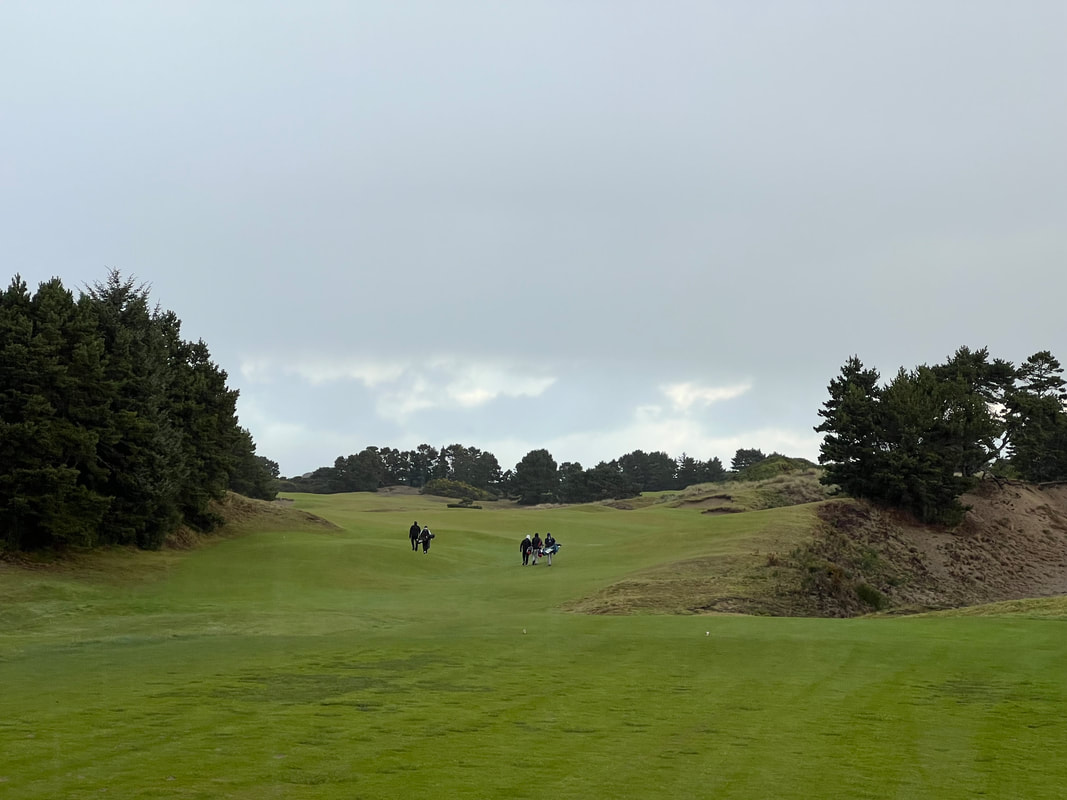
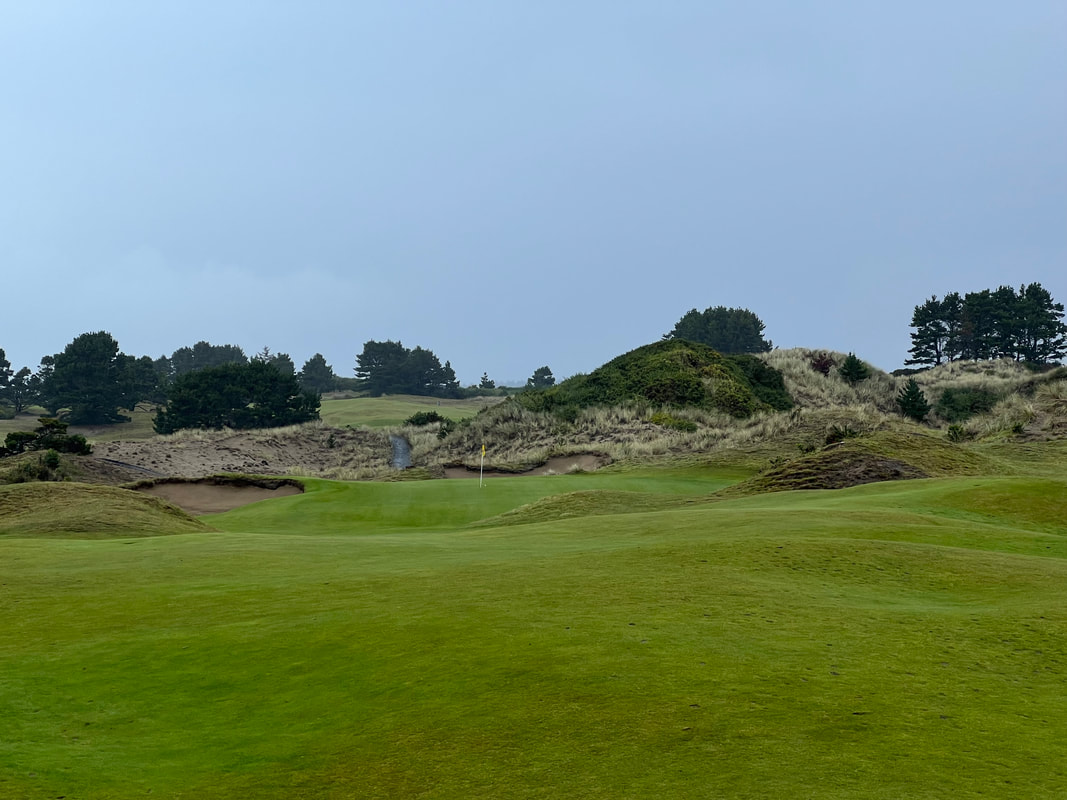
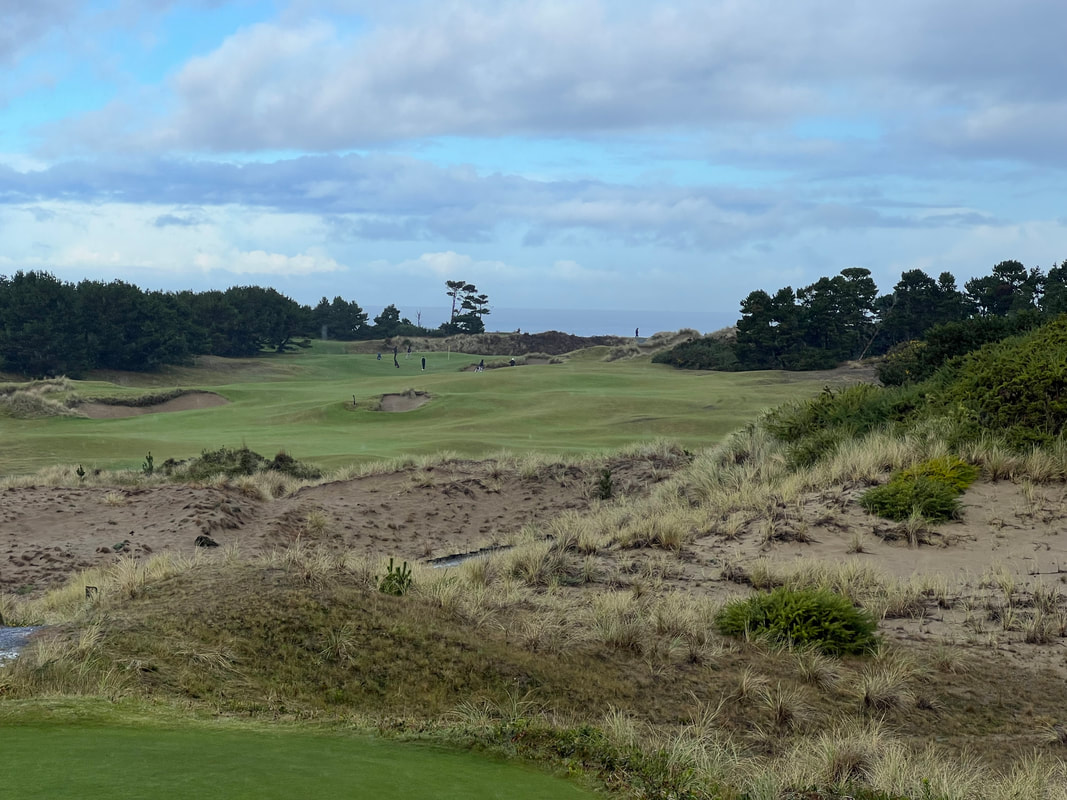
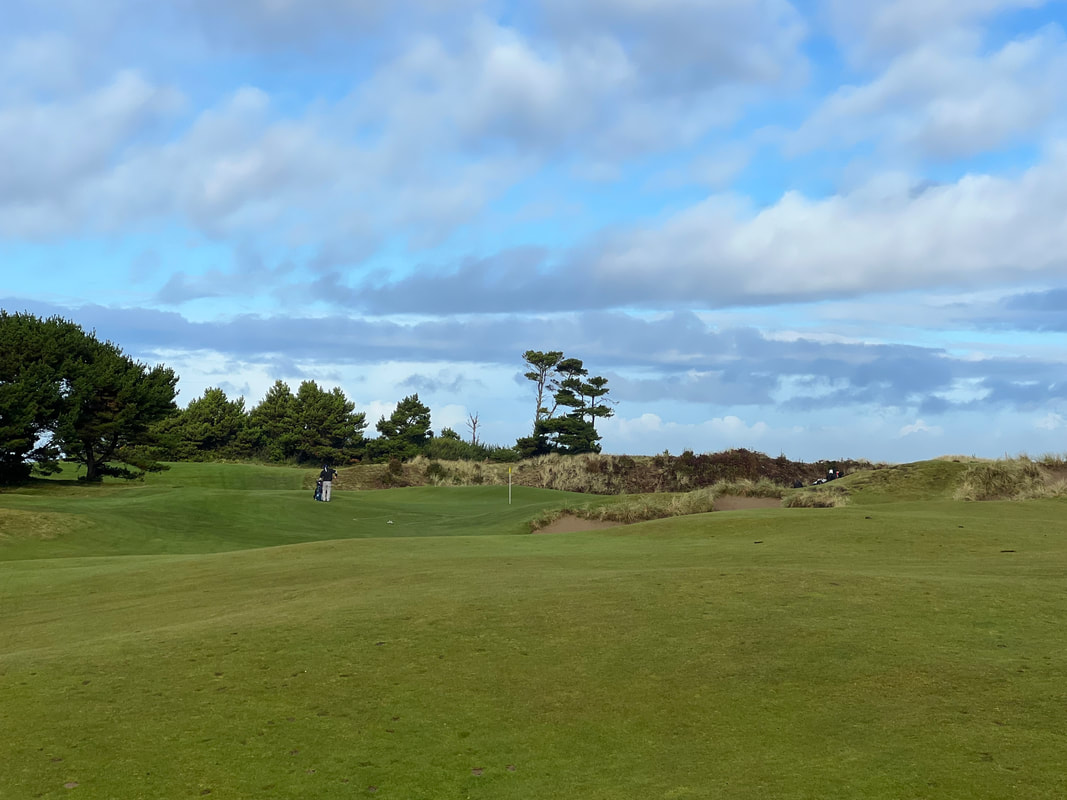
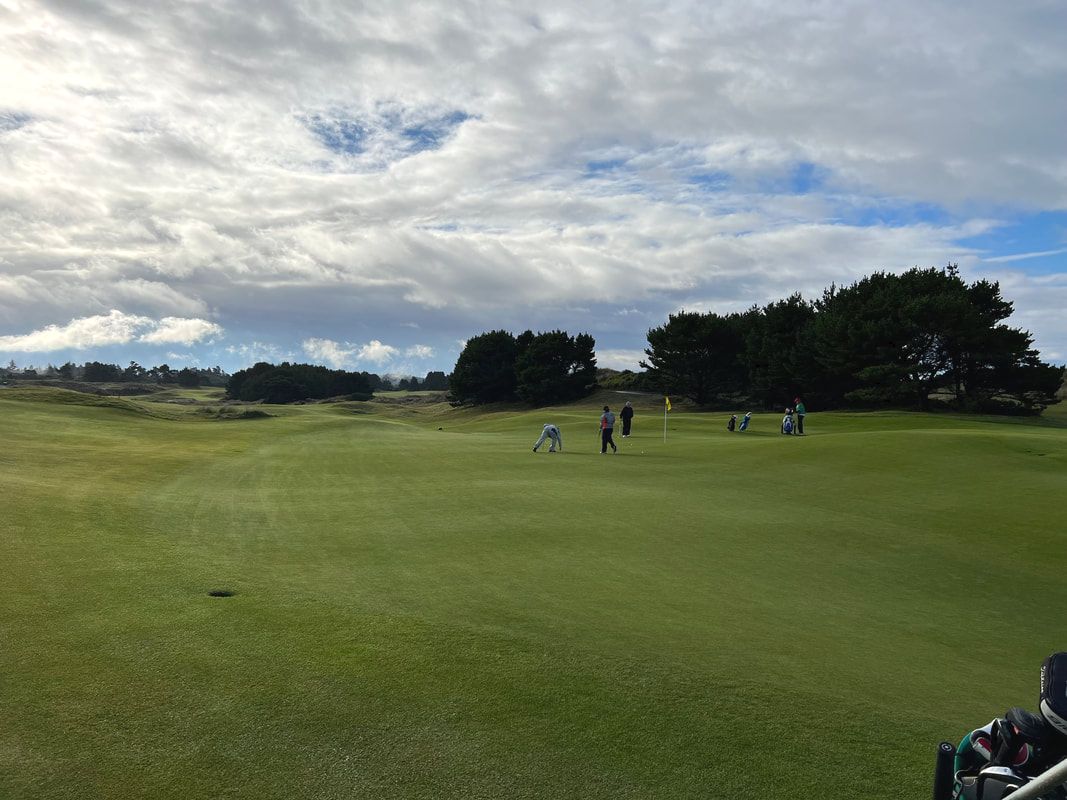
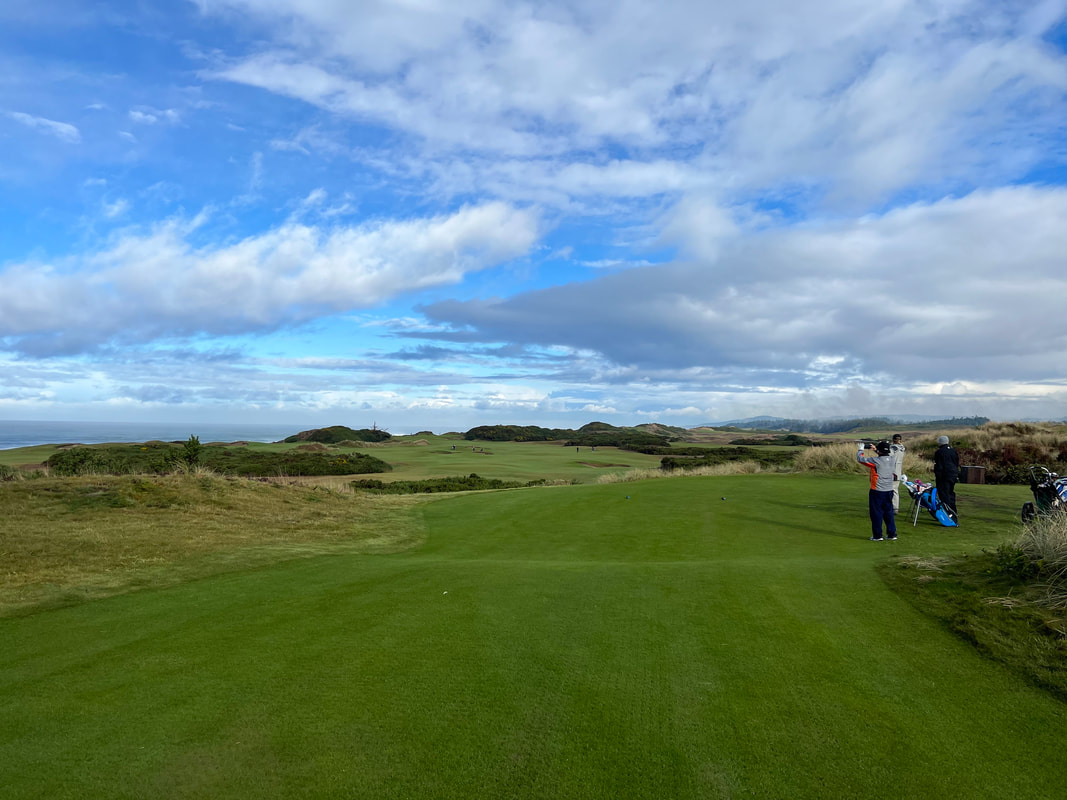
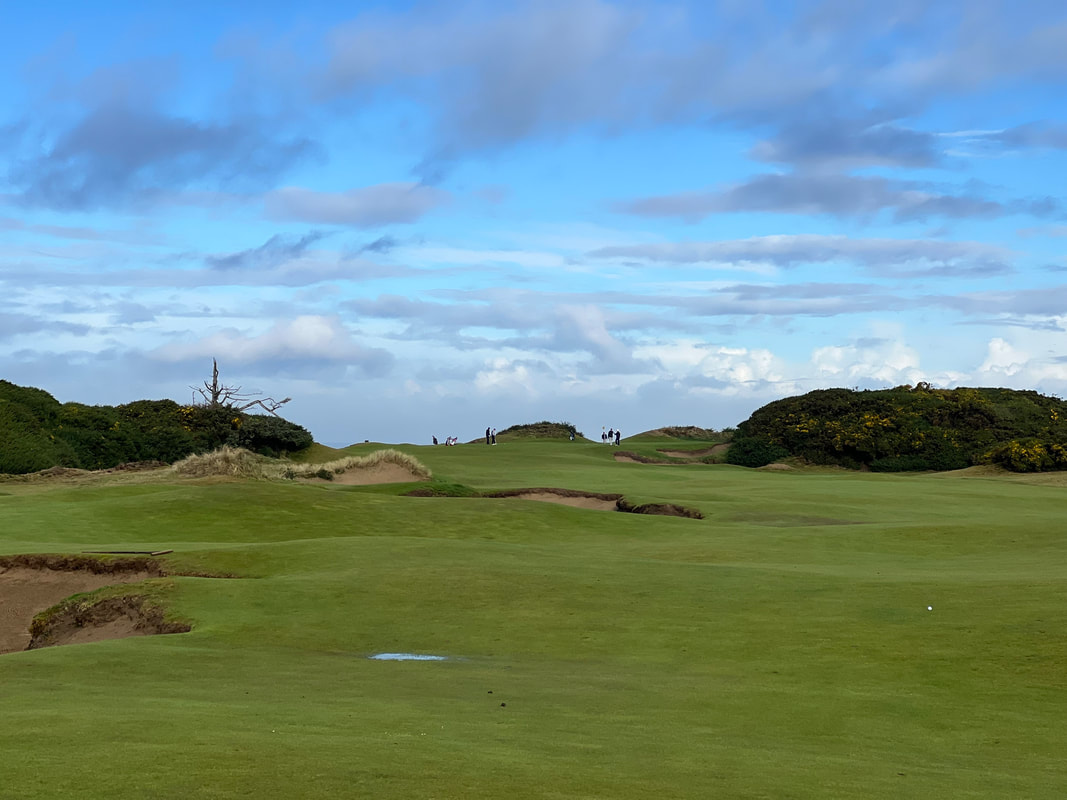
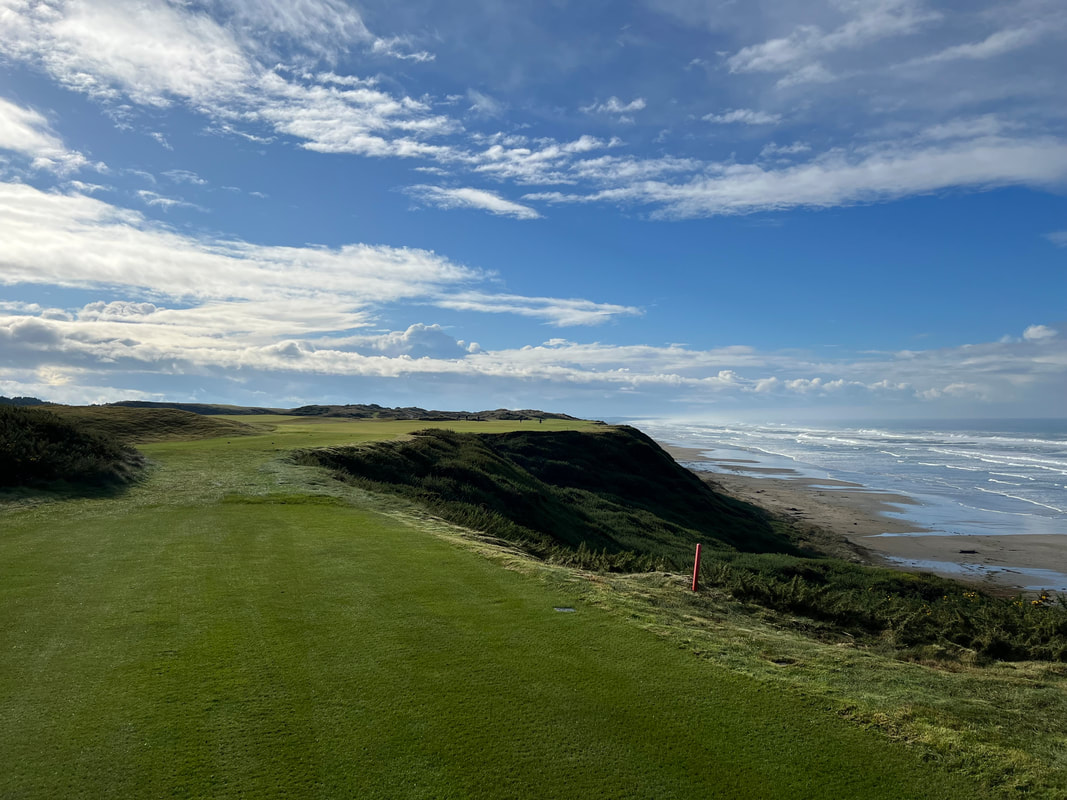
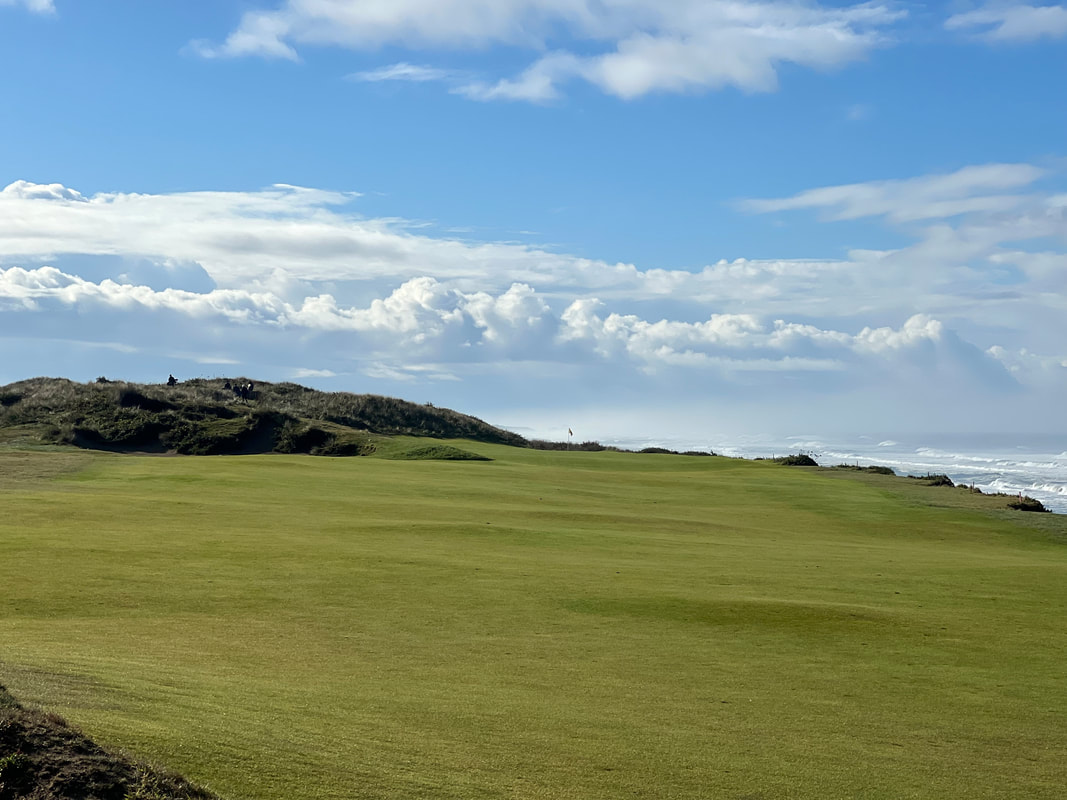
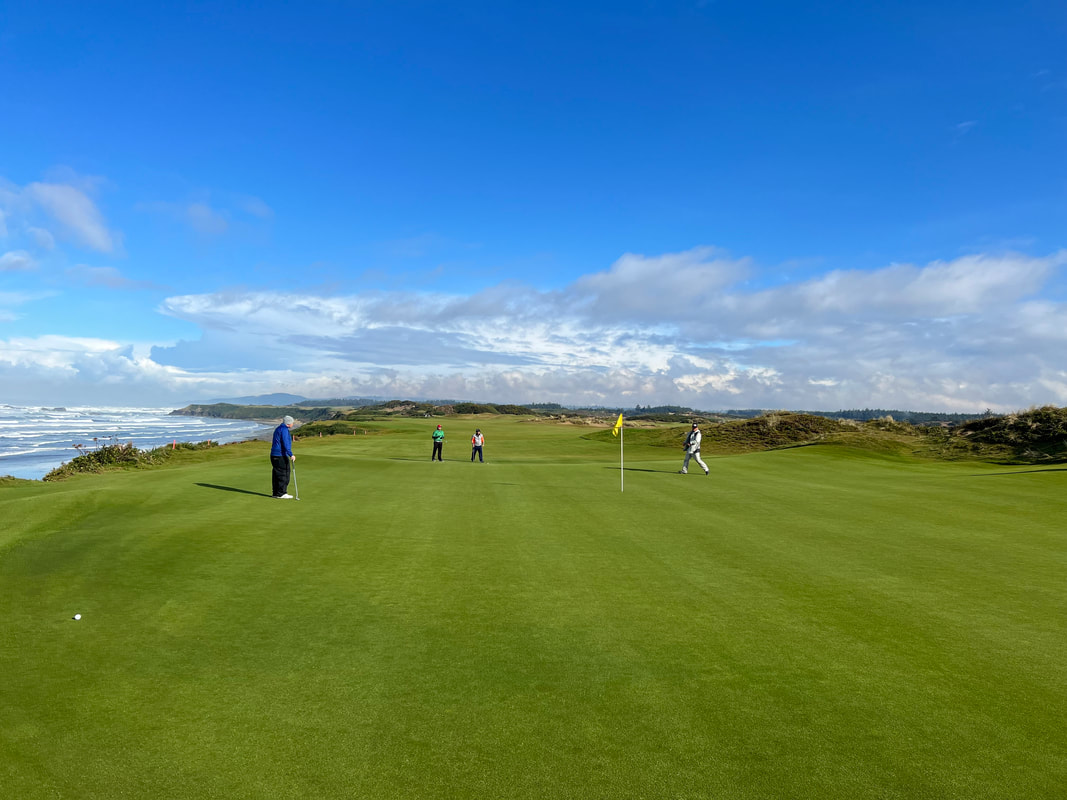
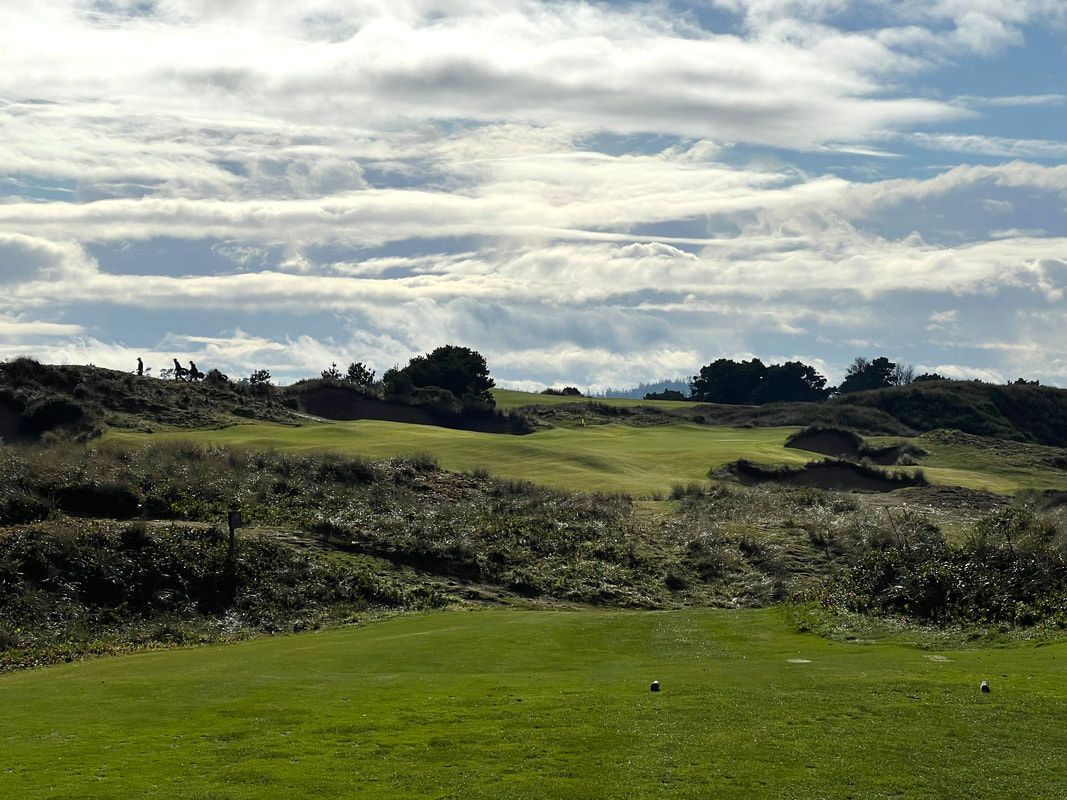
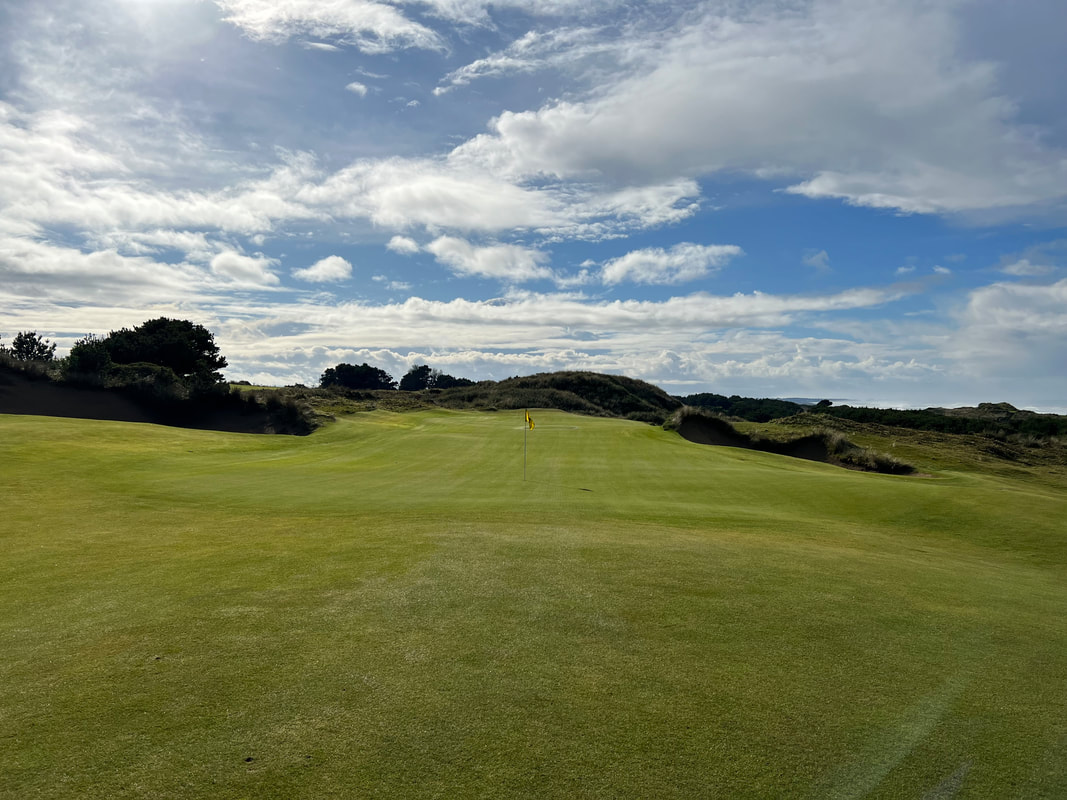
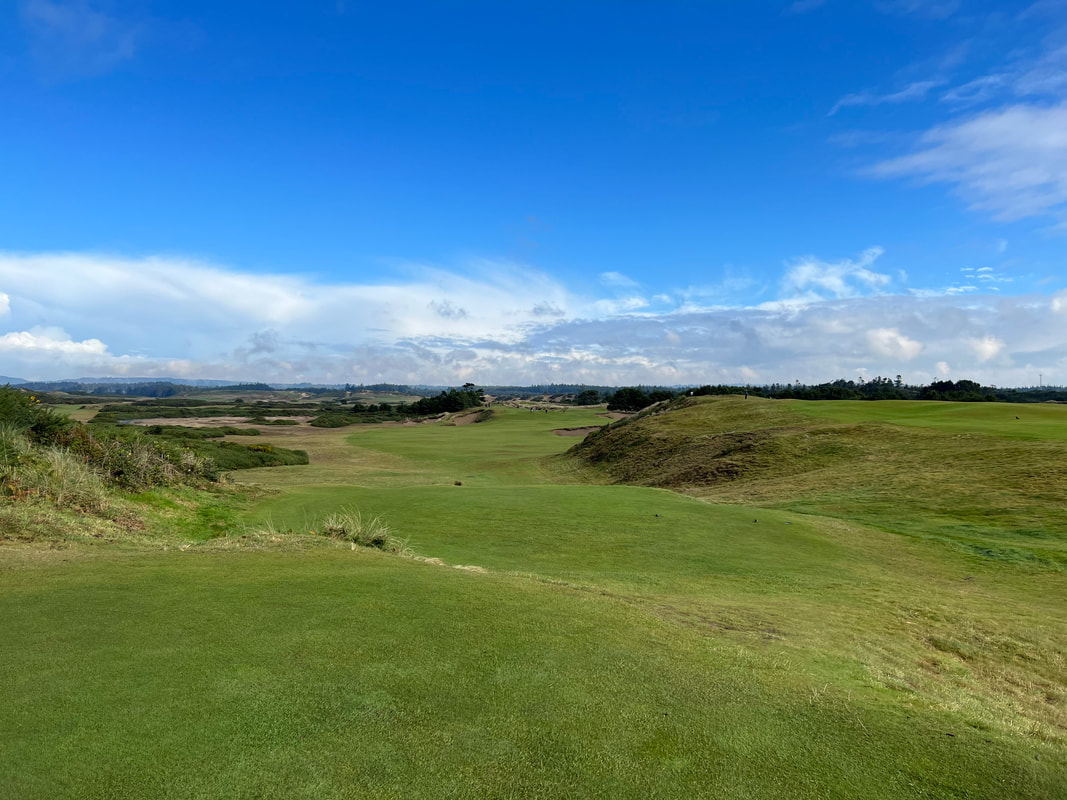
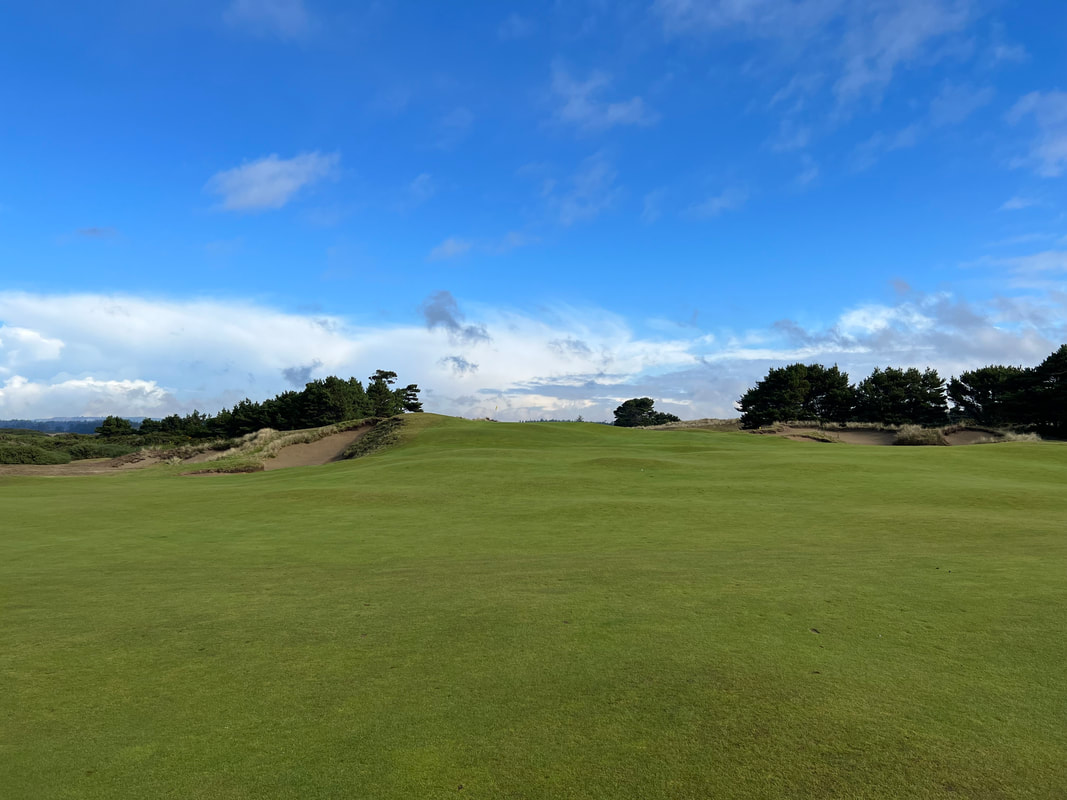

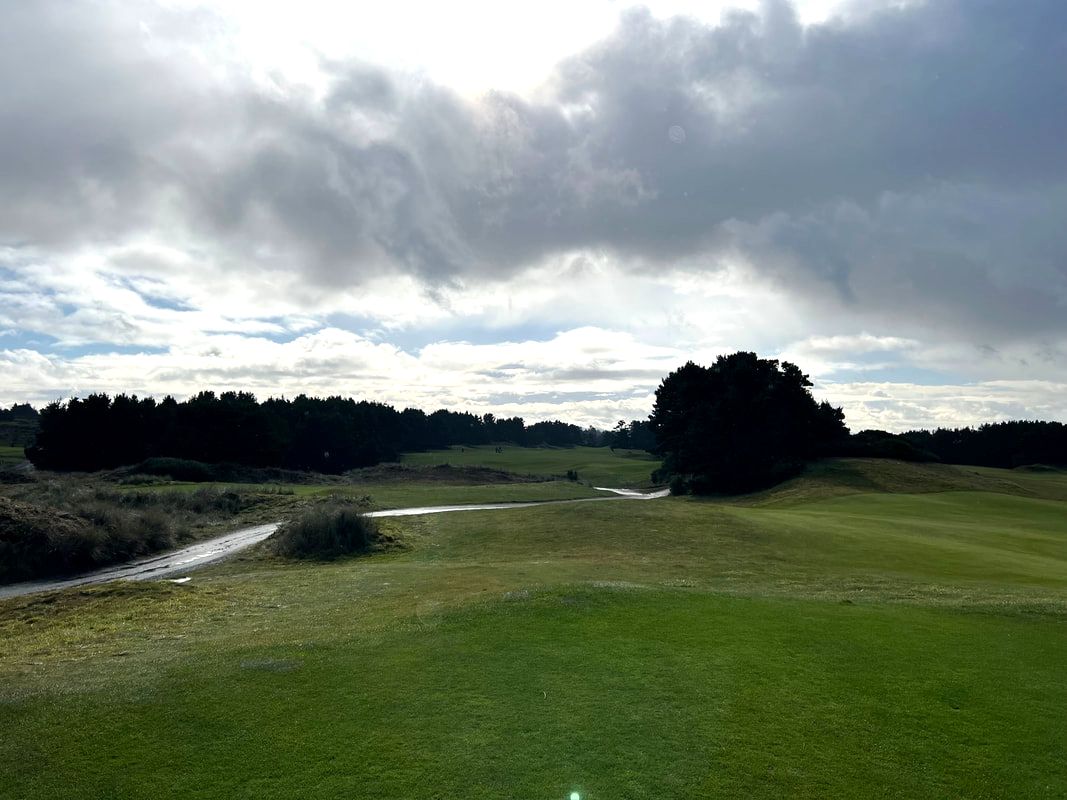
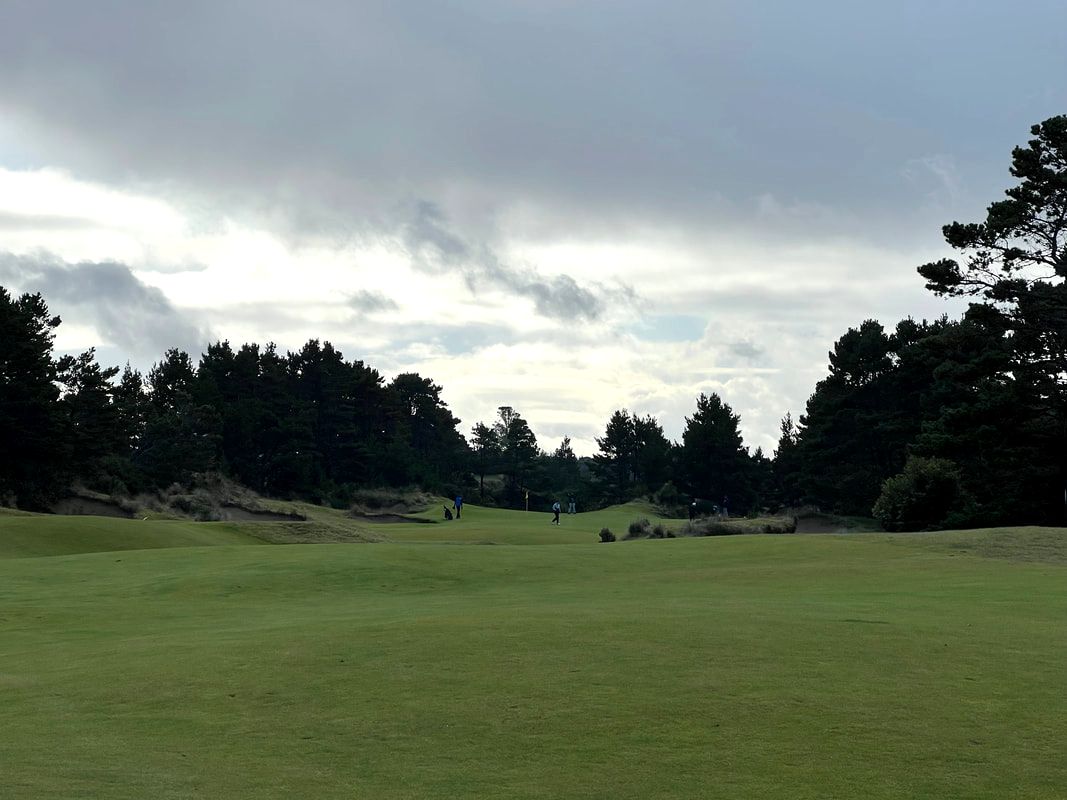
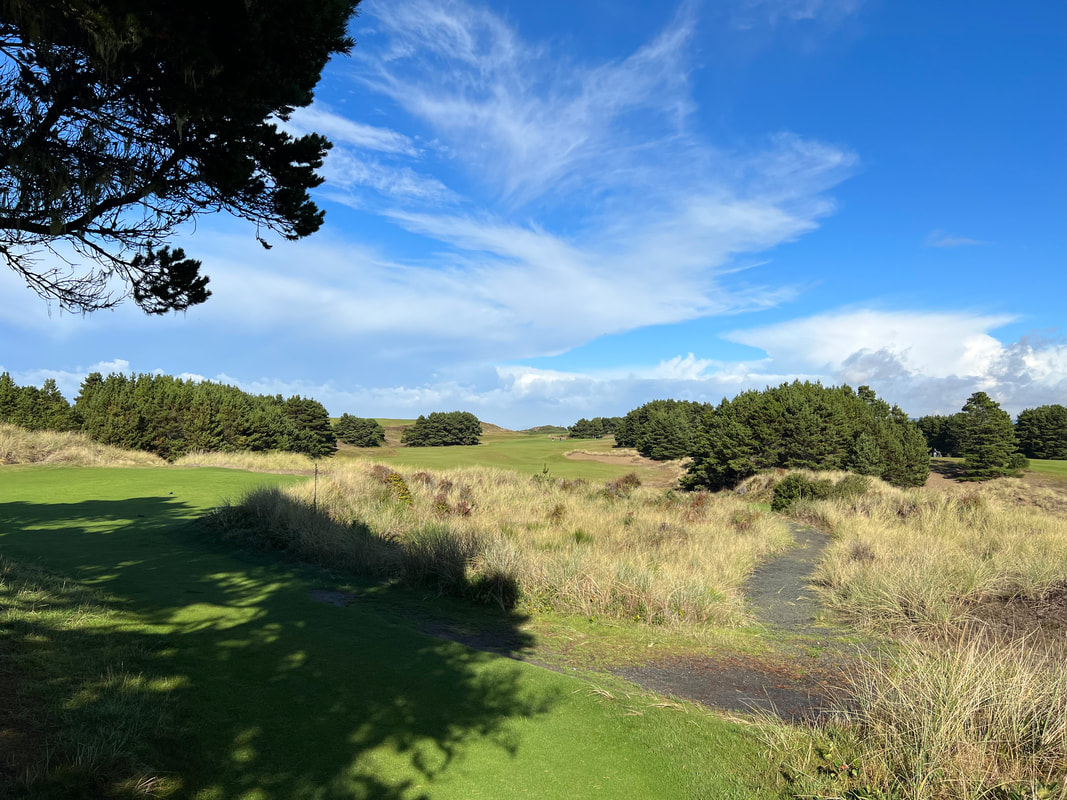
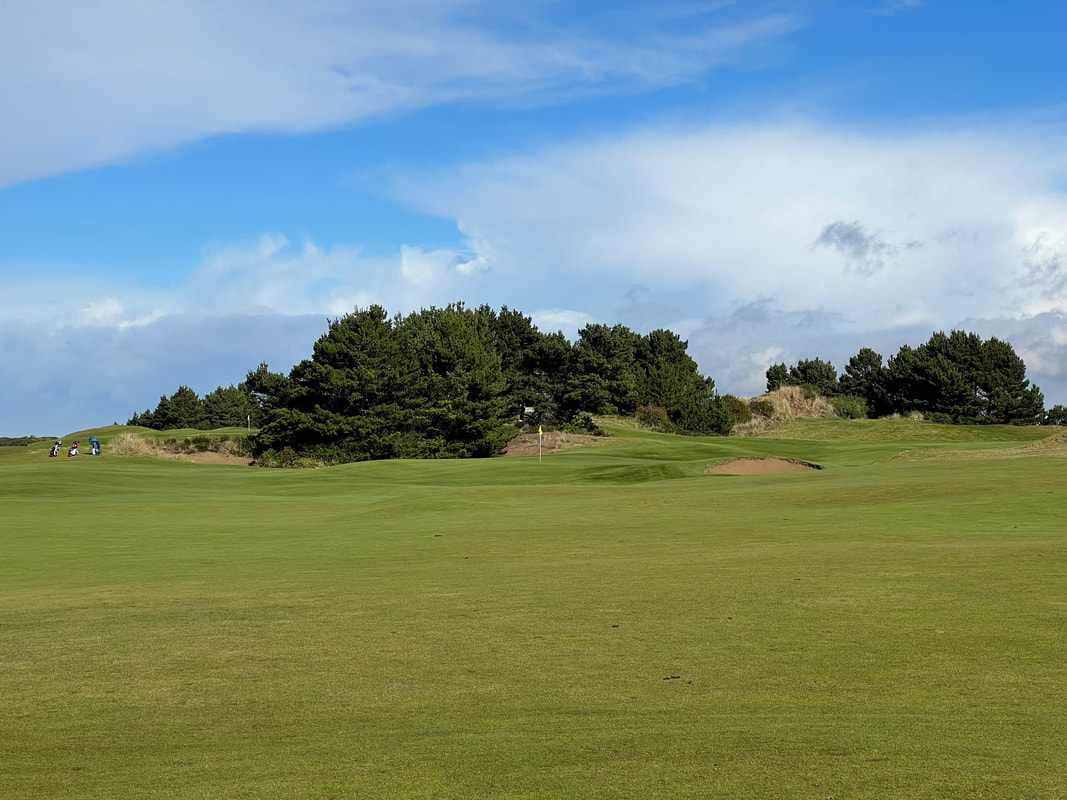
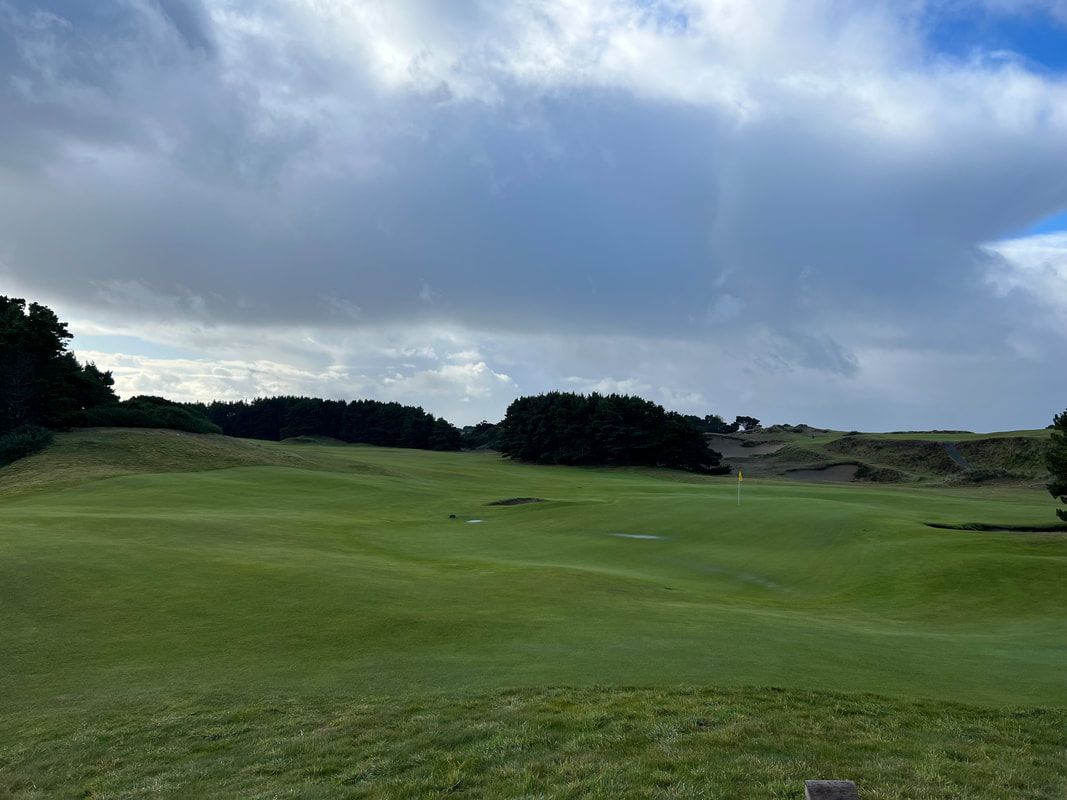
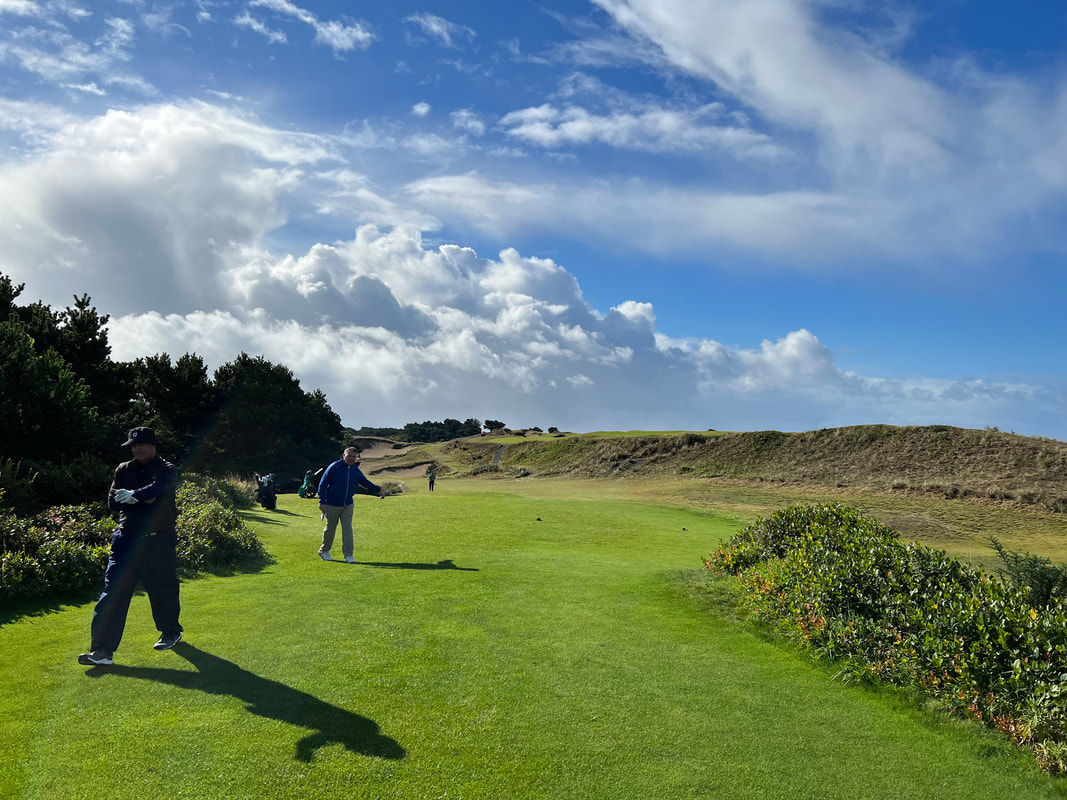

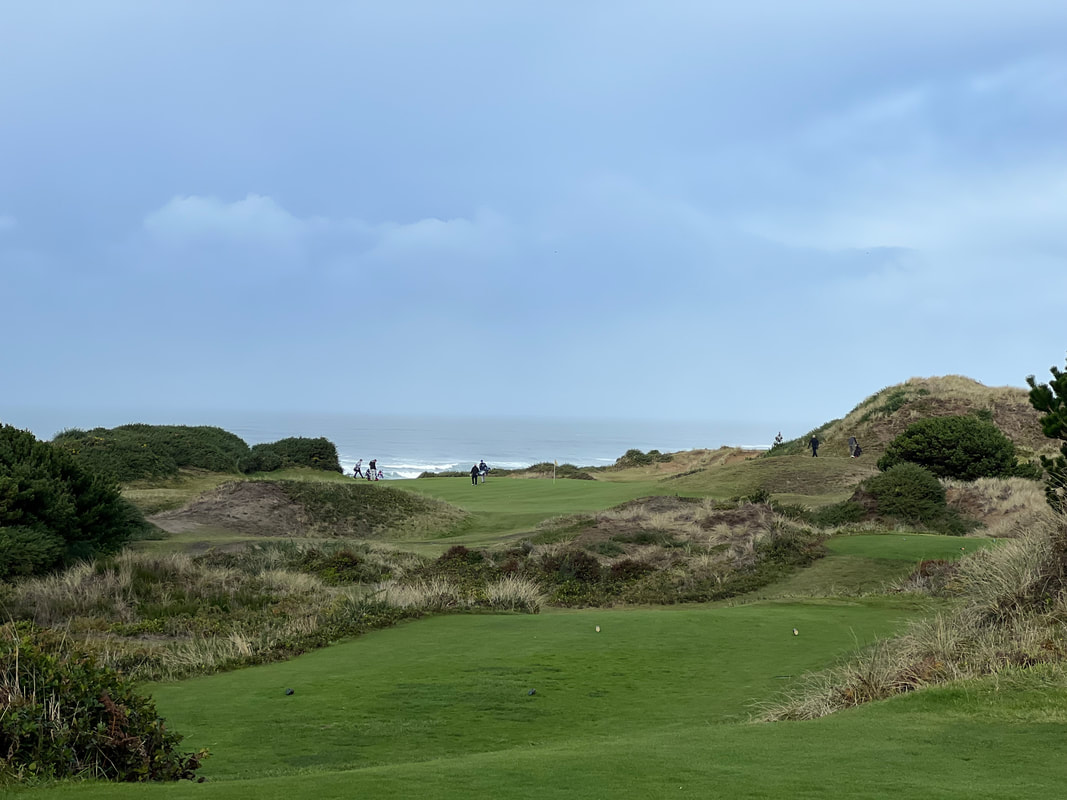
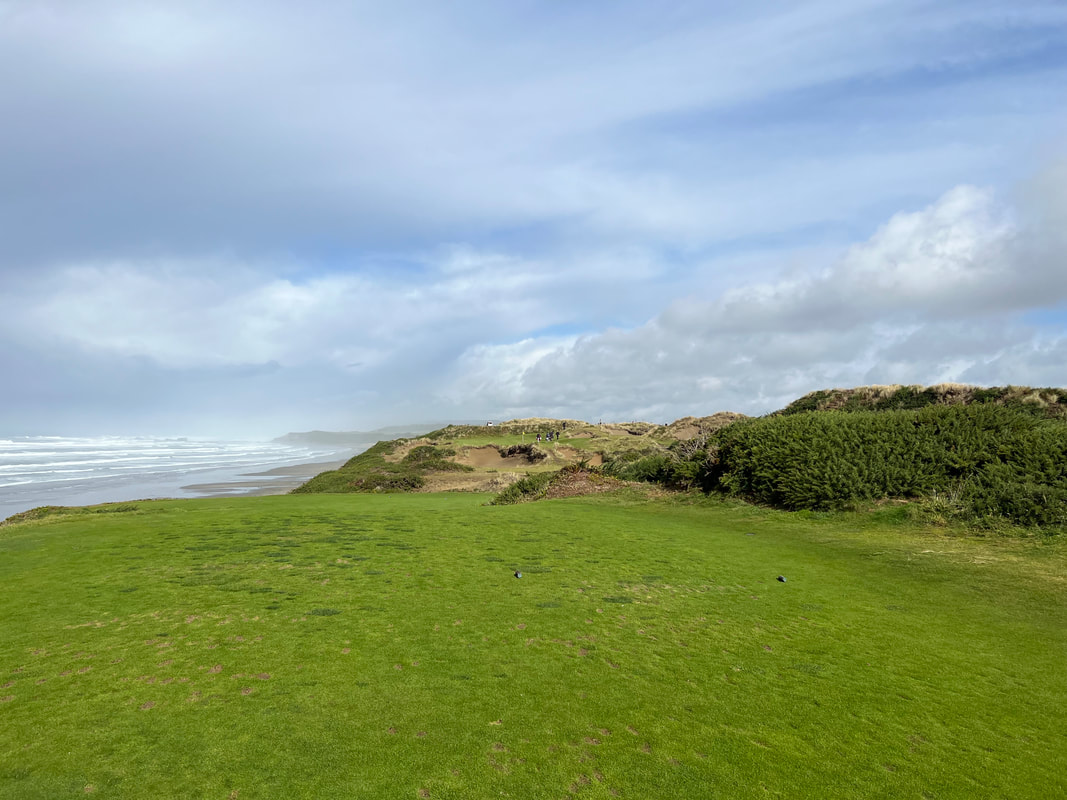
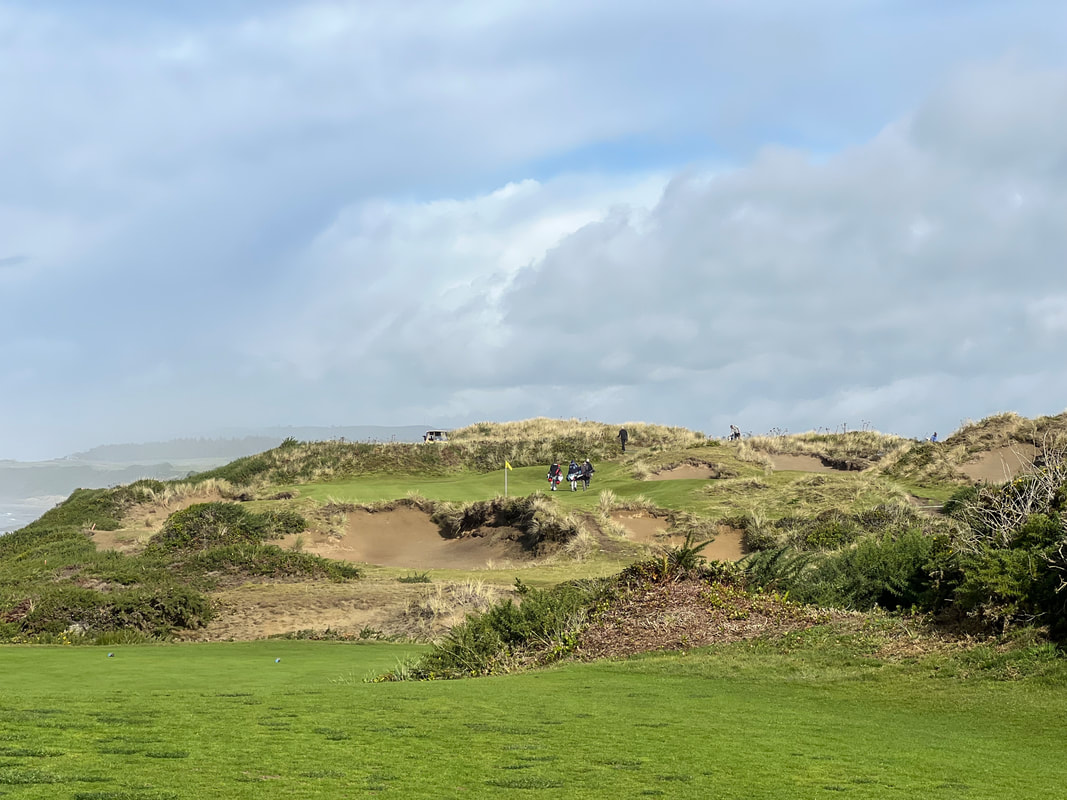
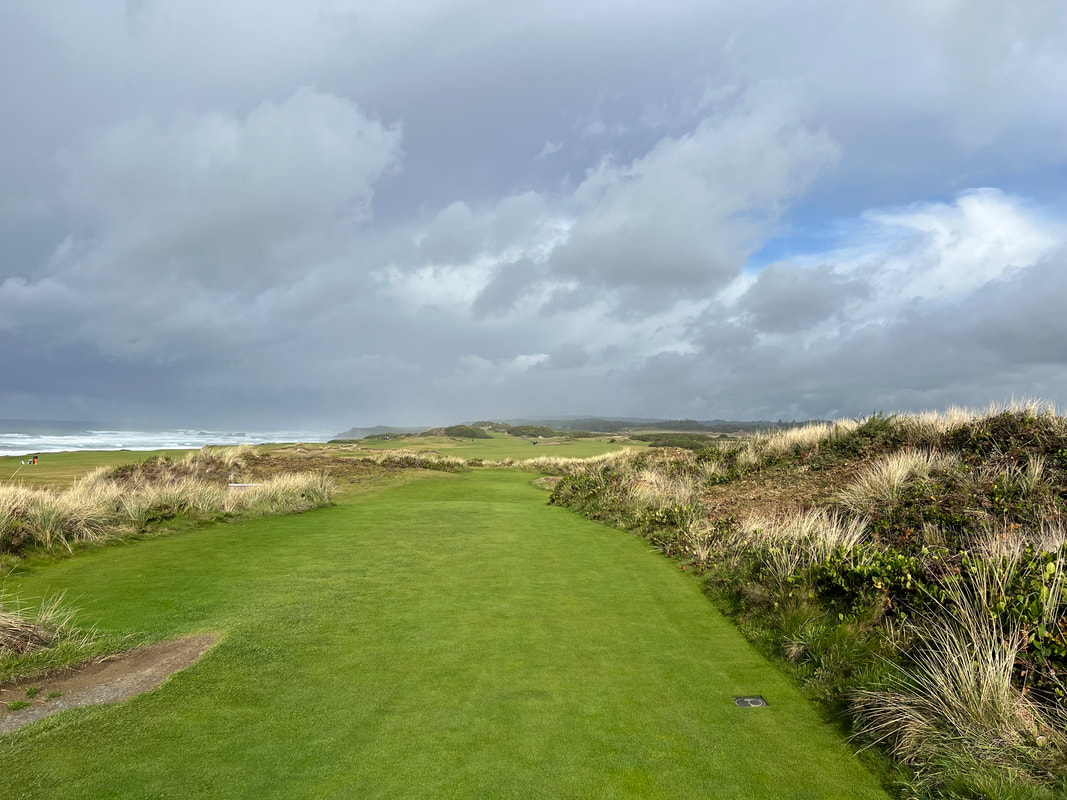
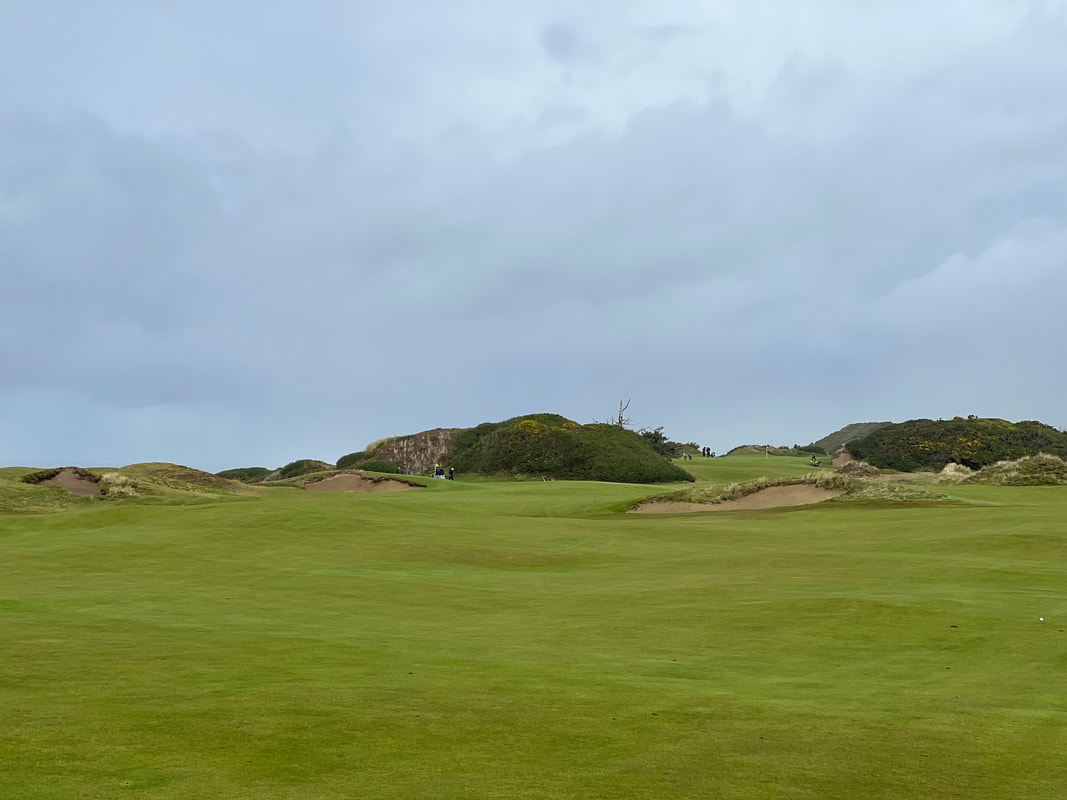

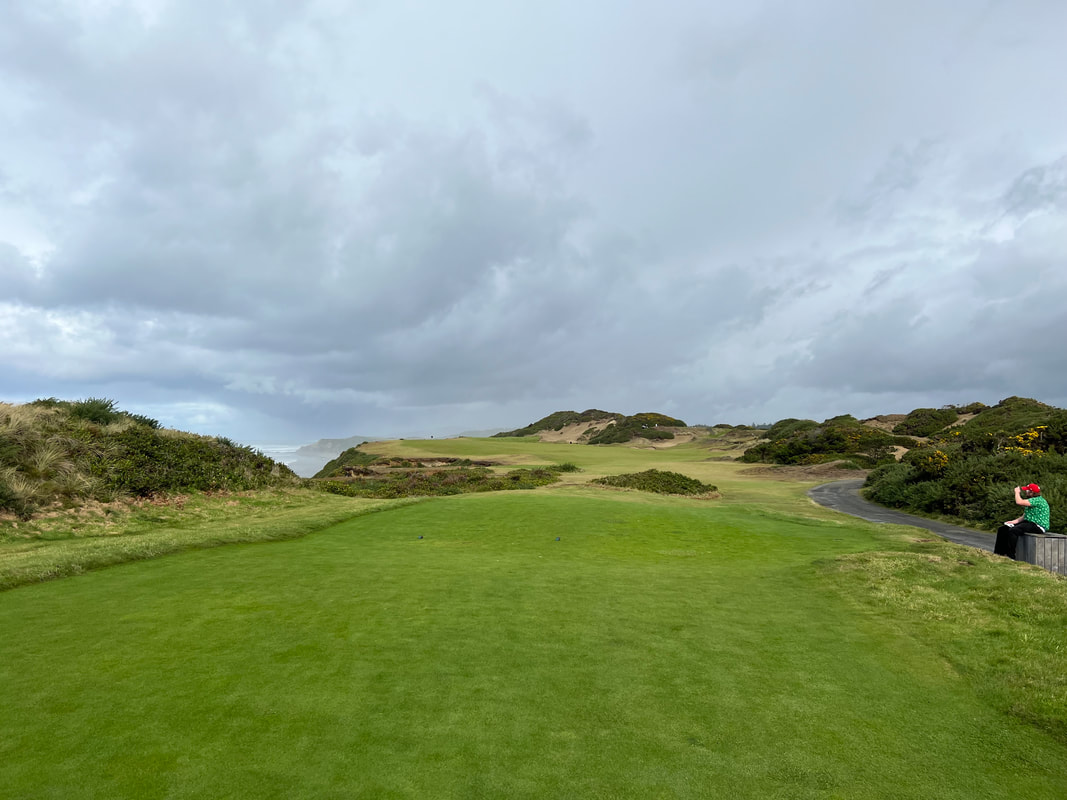
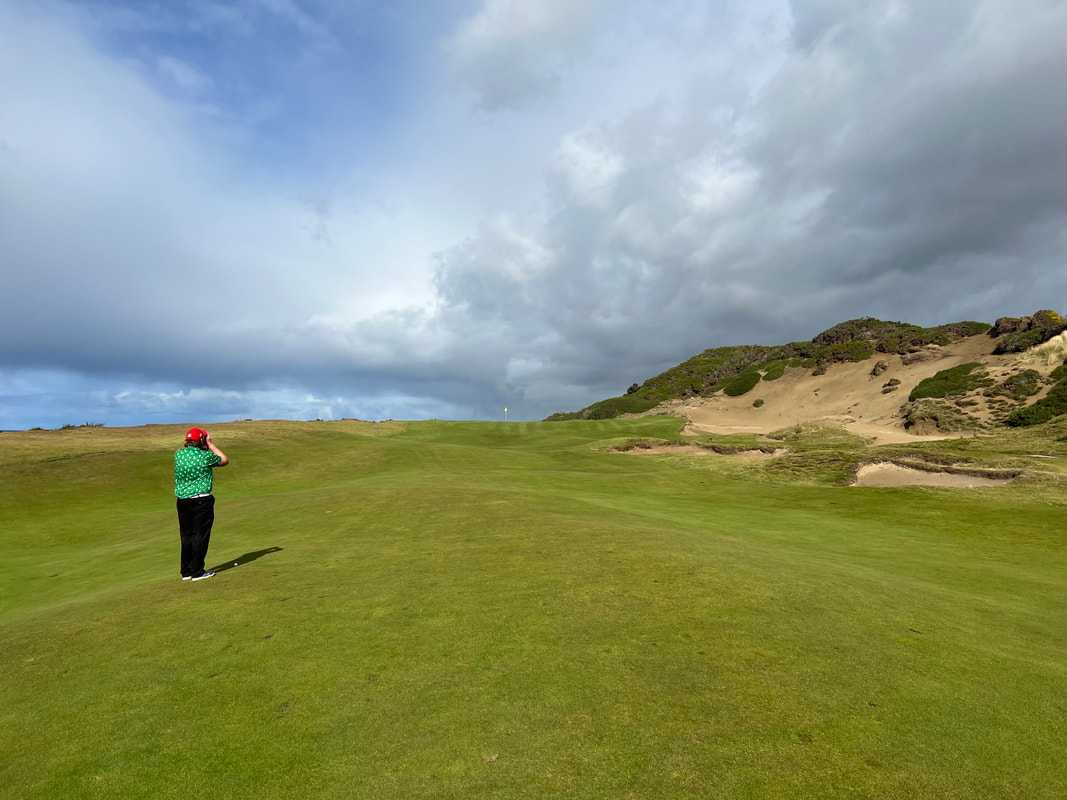
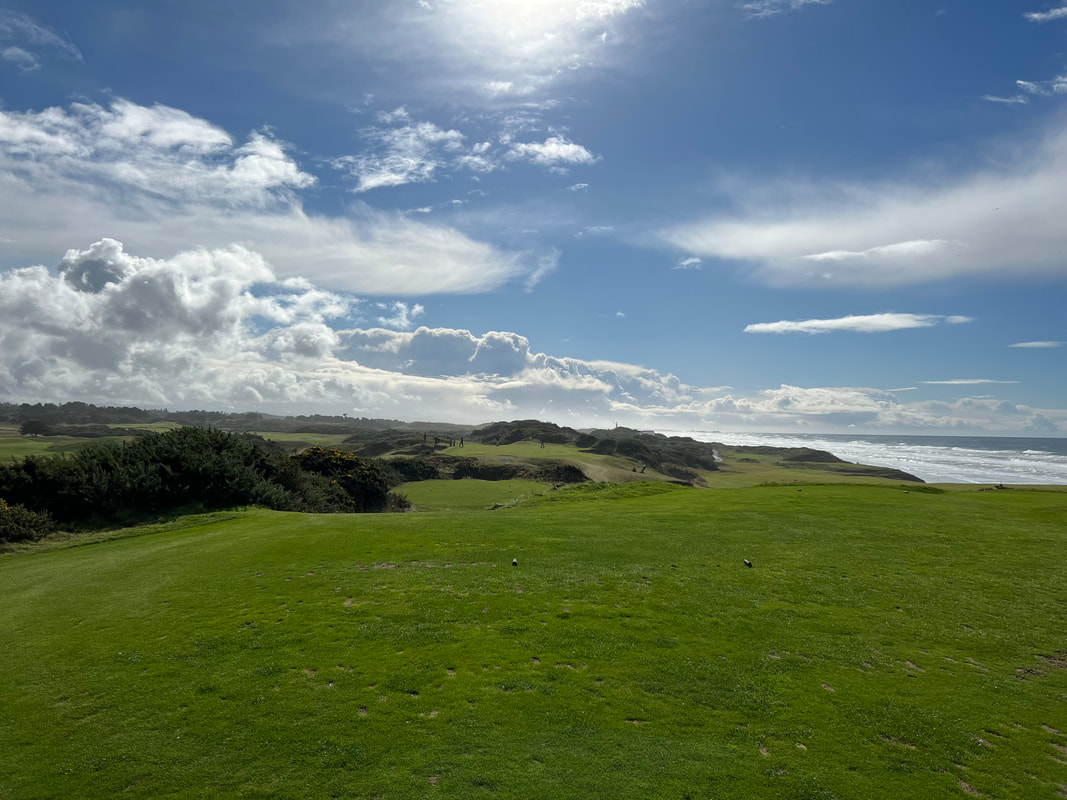
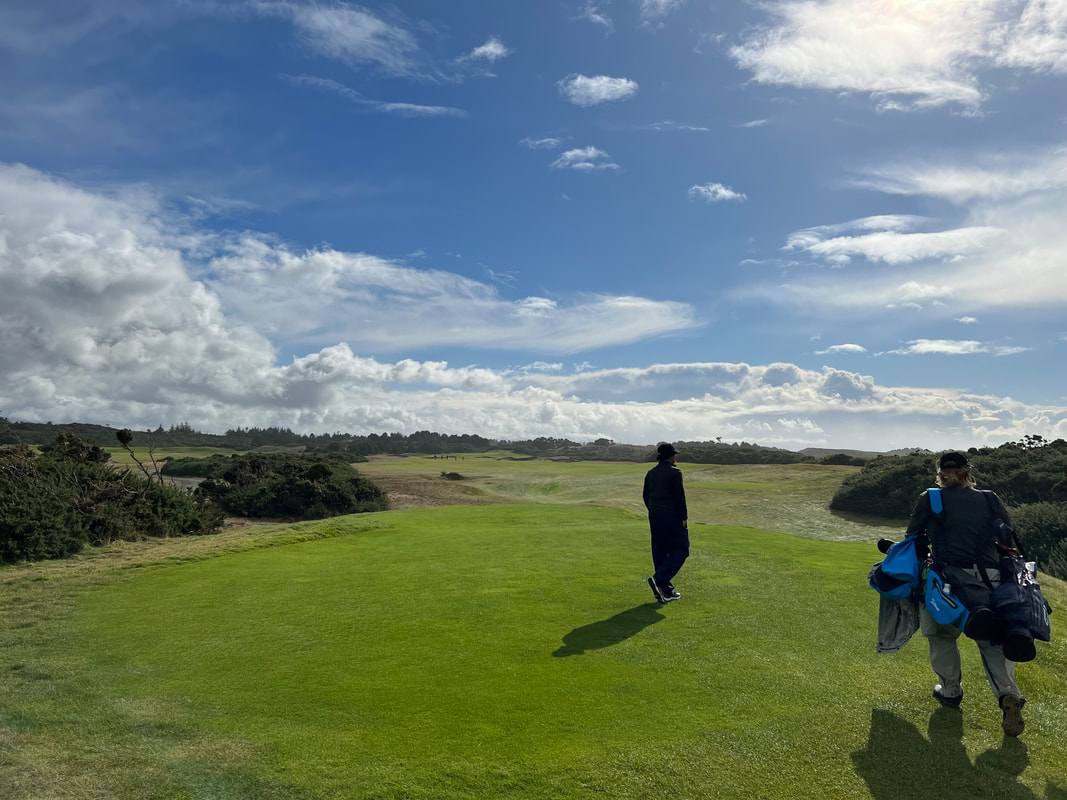
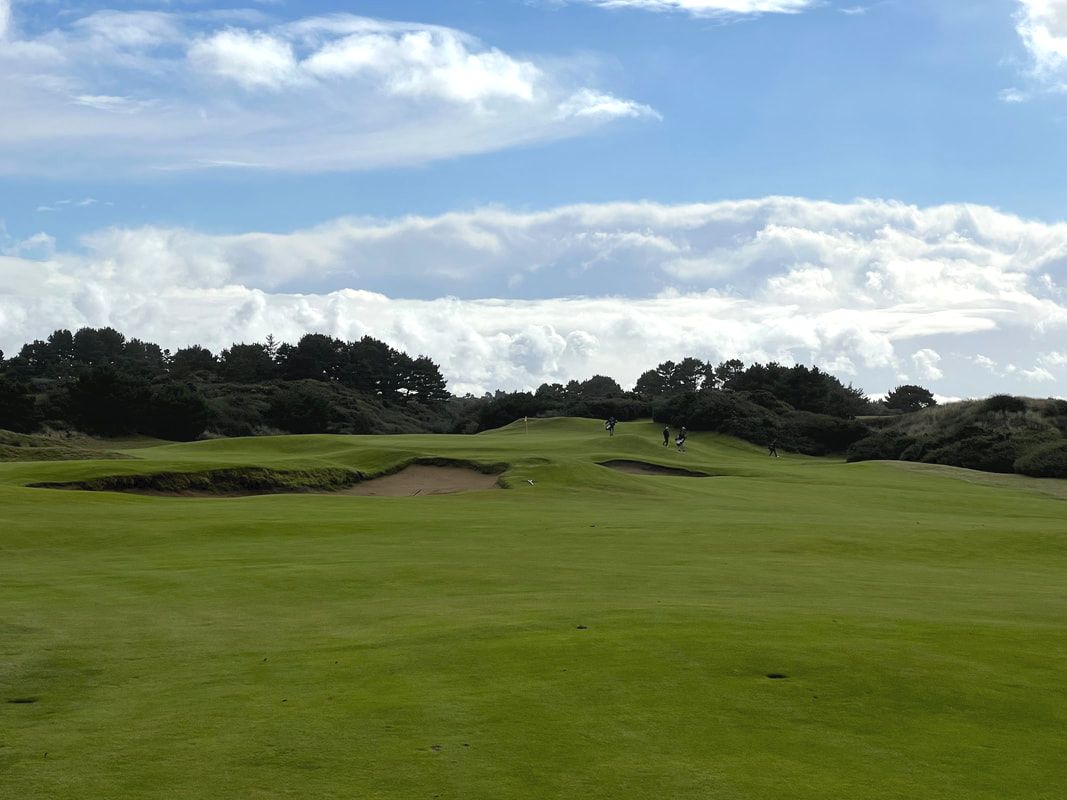
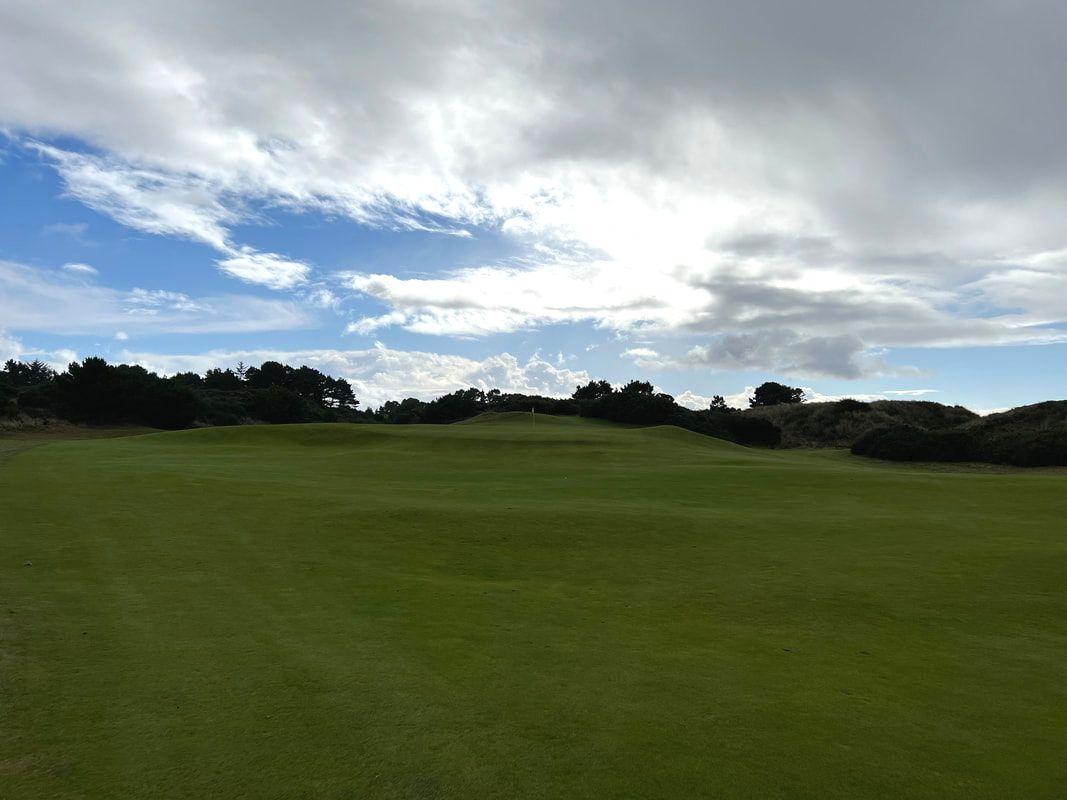
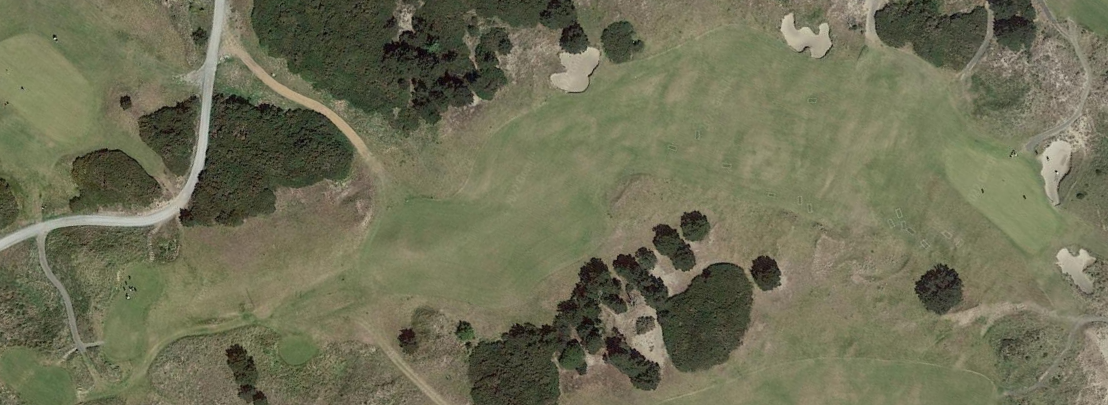
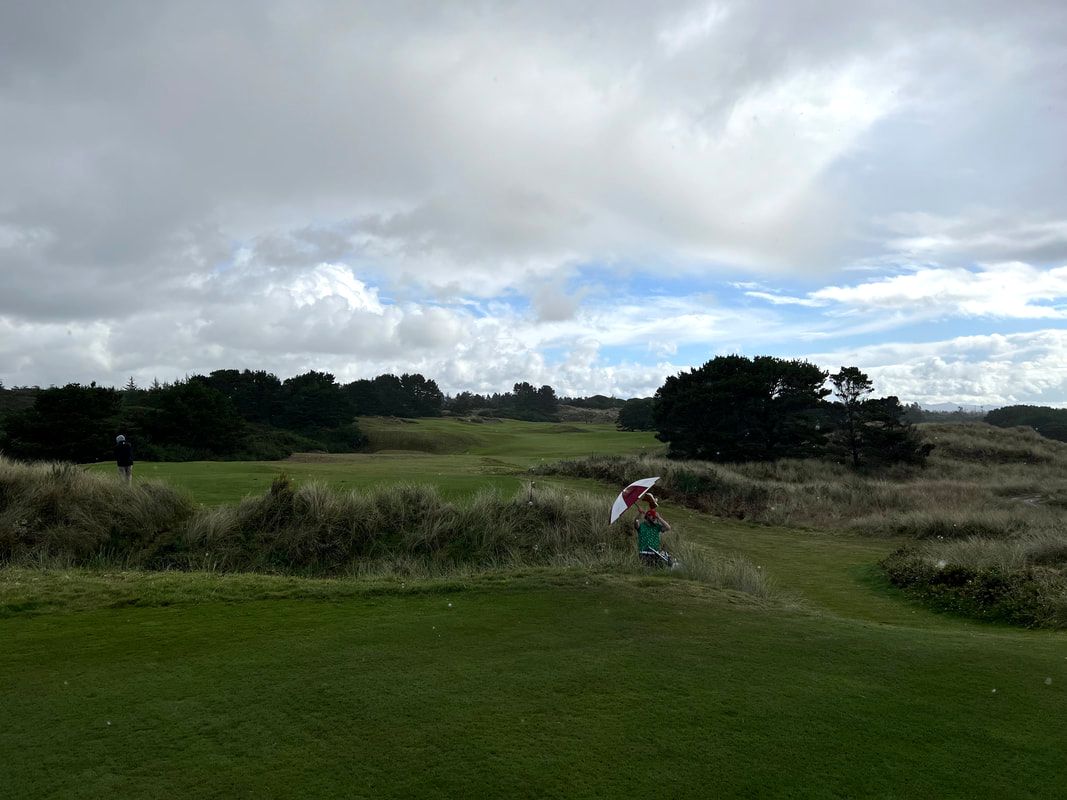
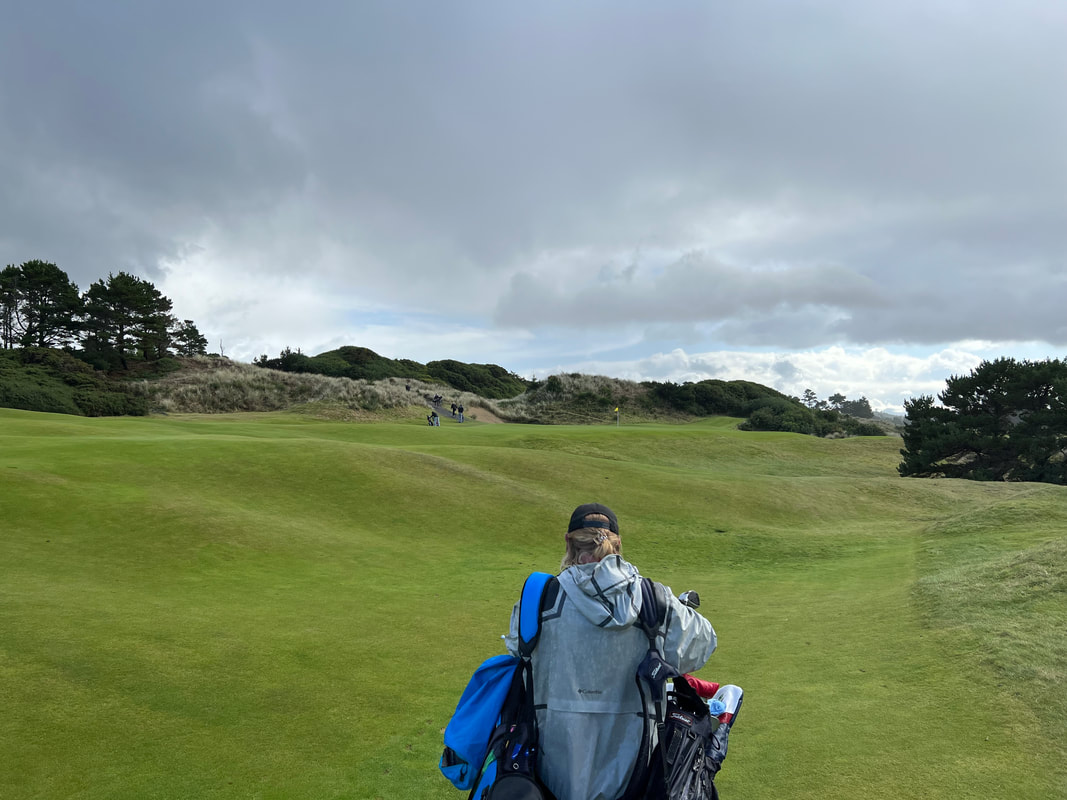
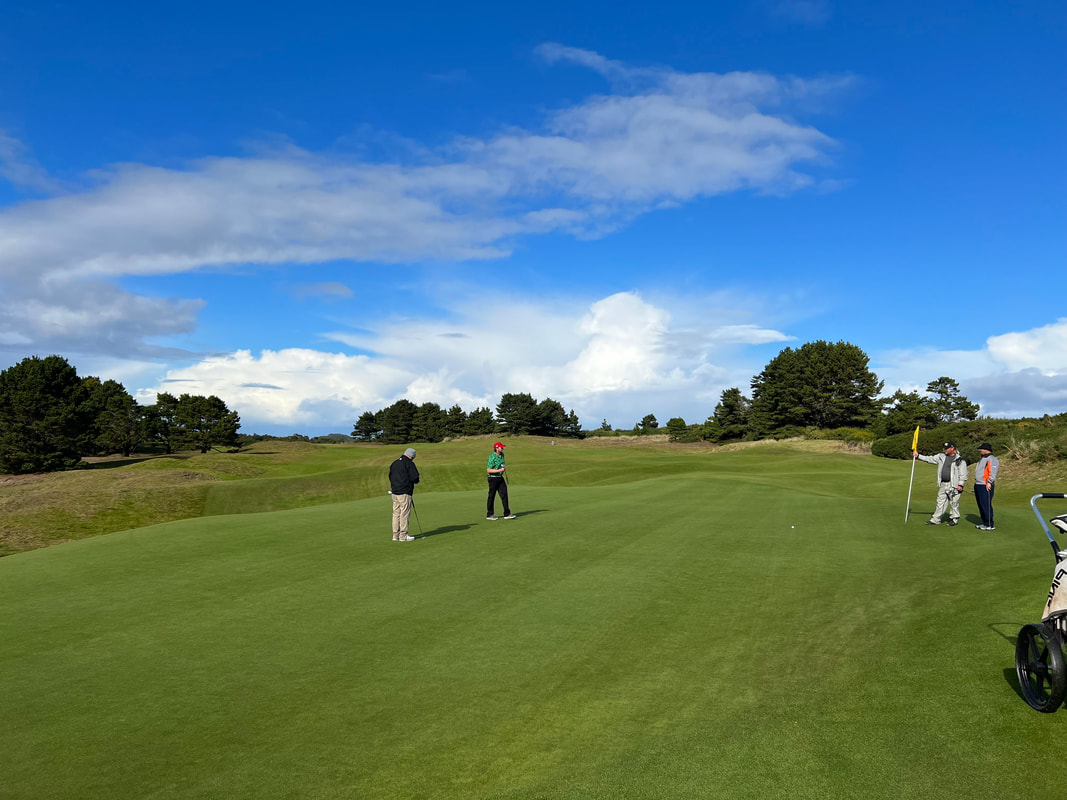
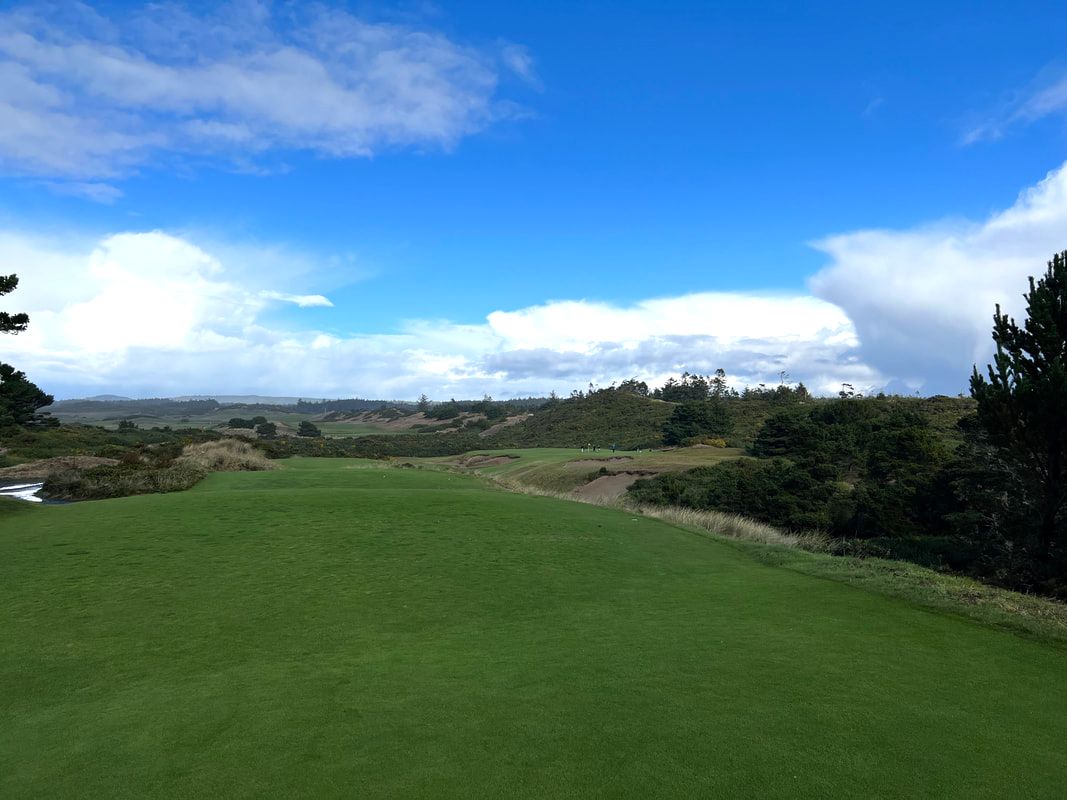
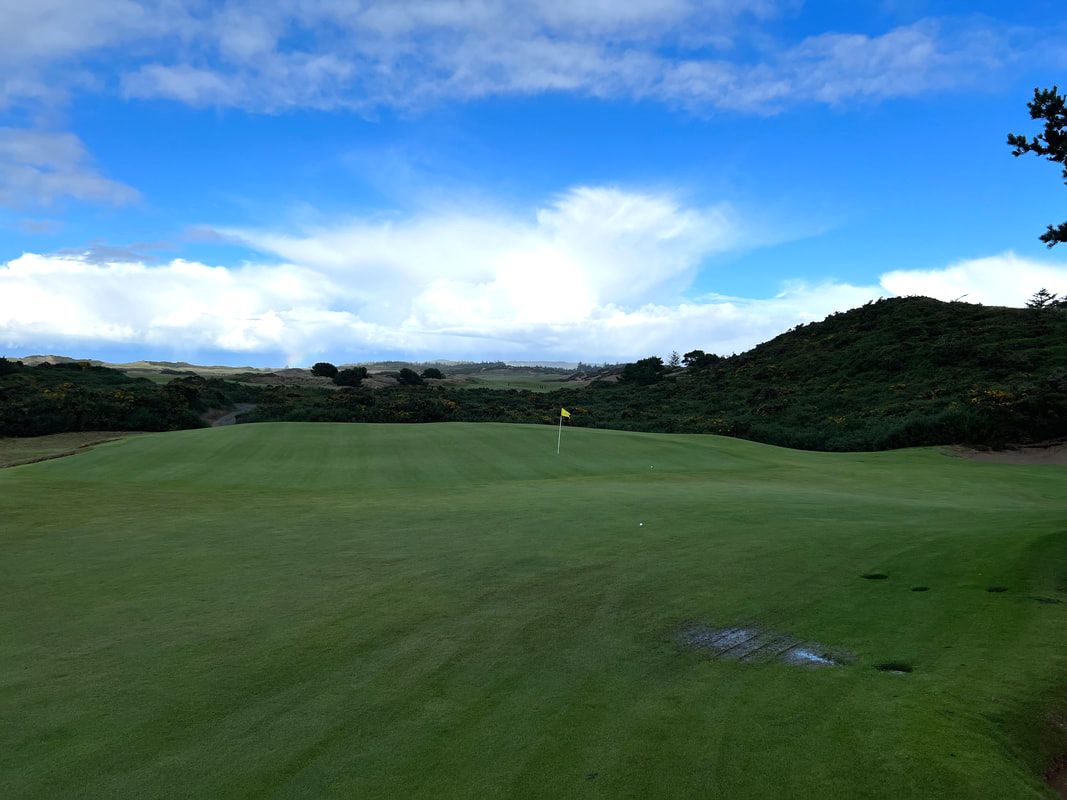
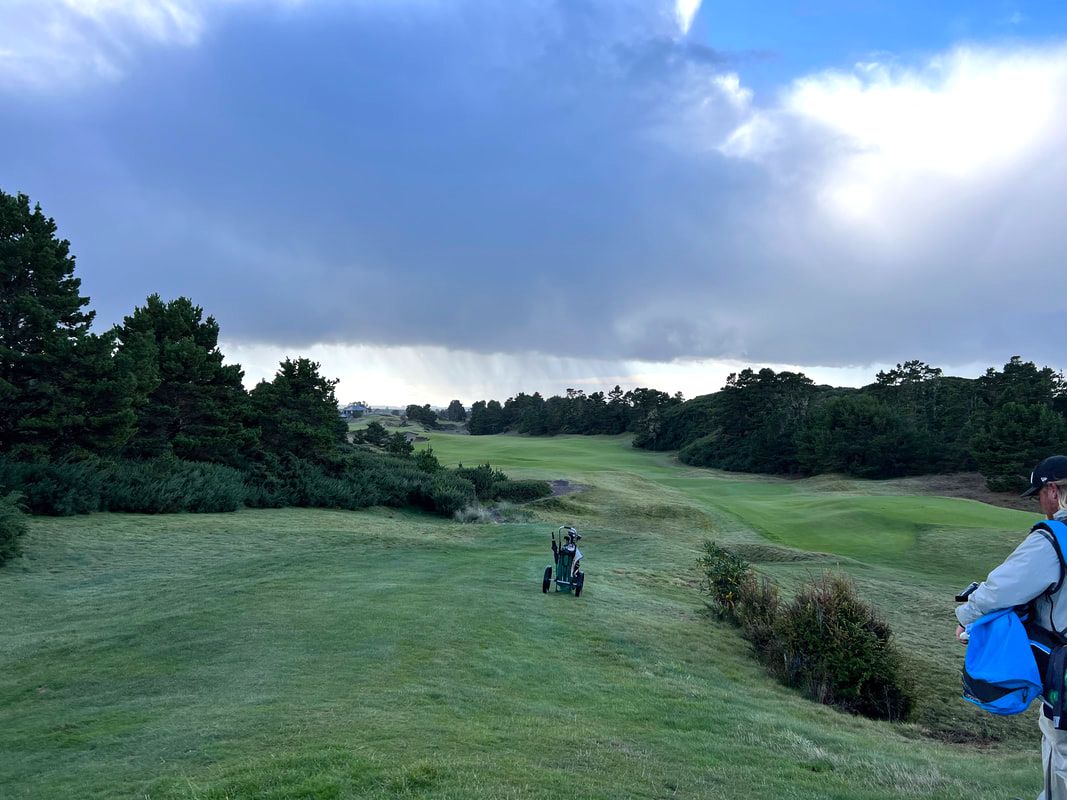
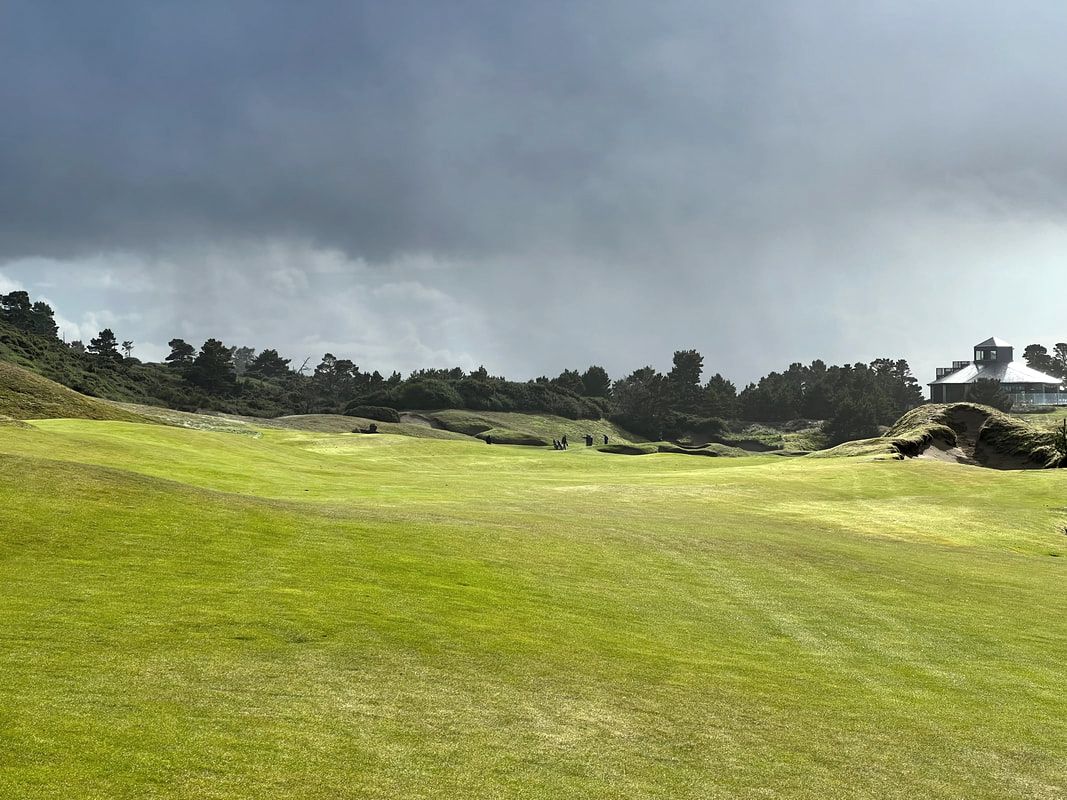
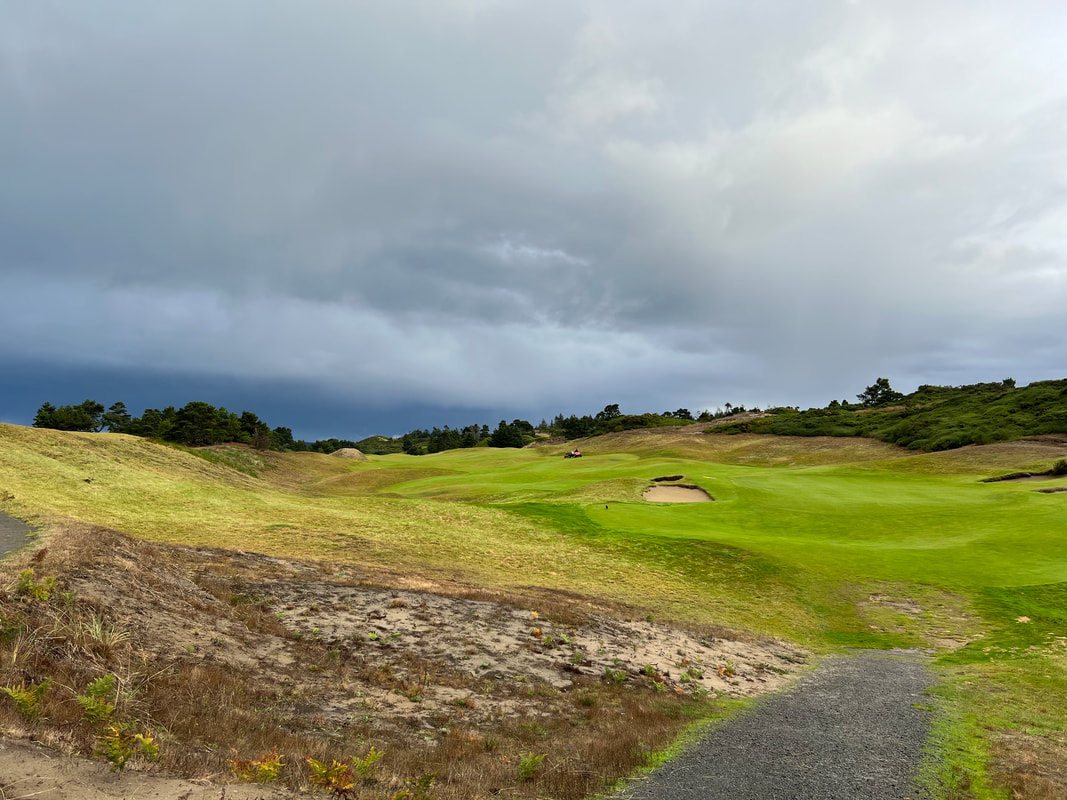
 RSS Feed
RSS Feed